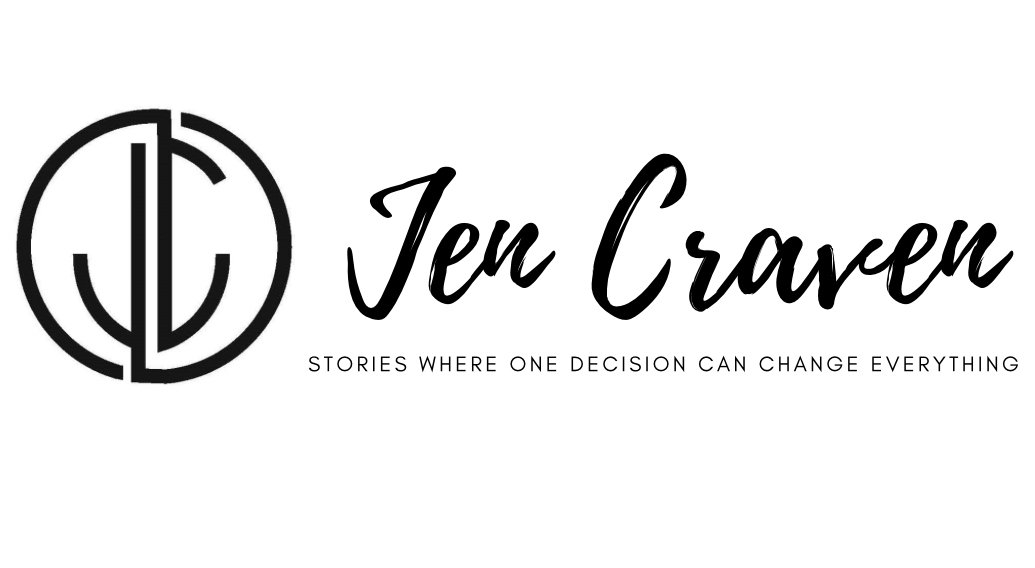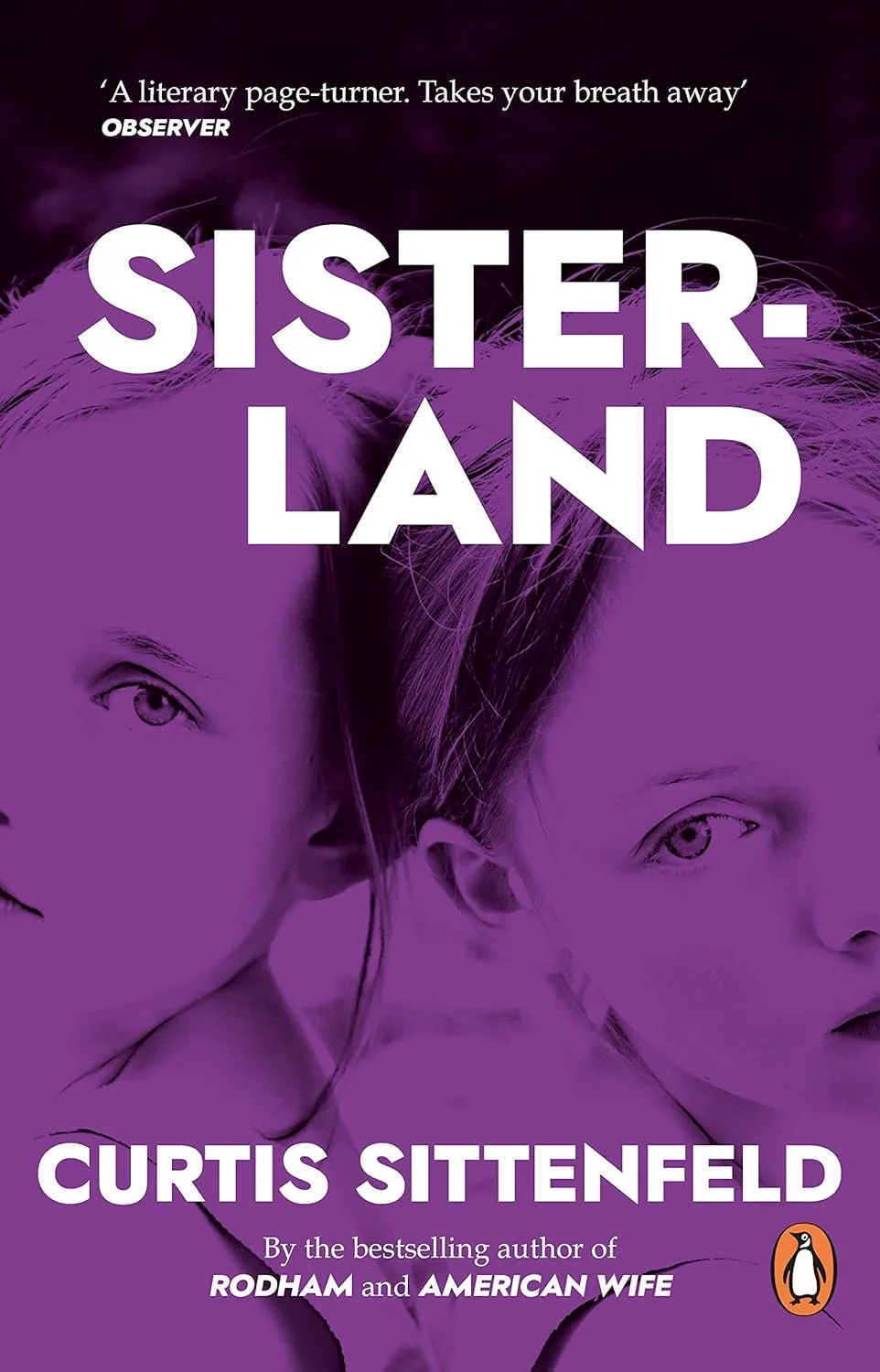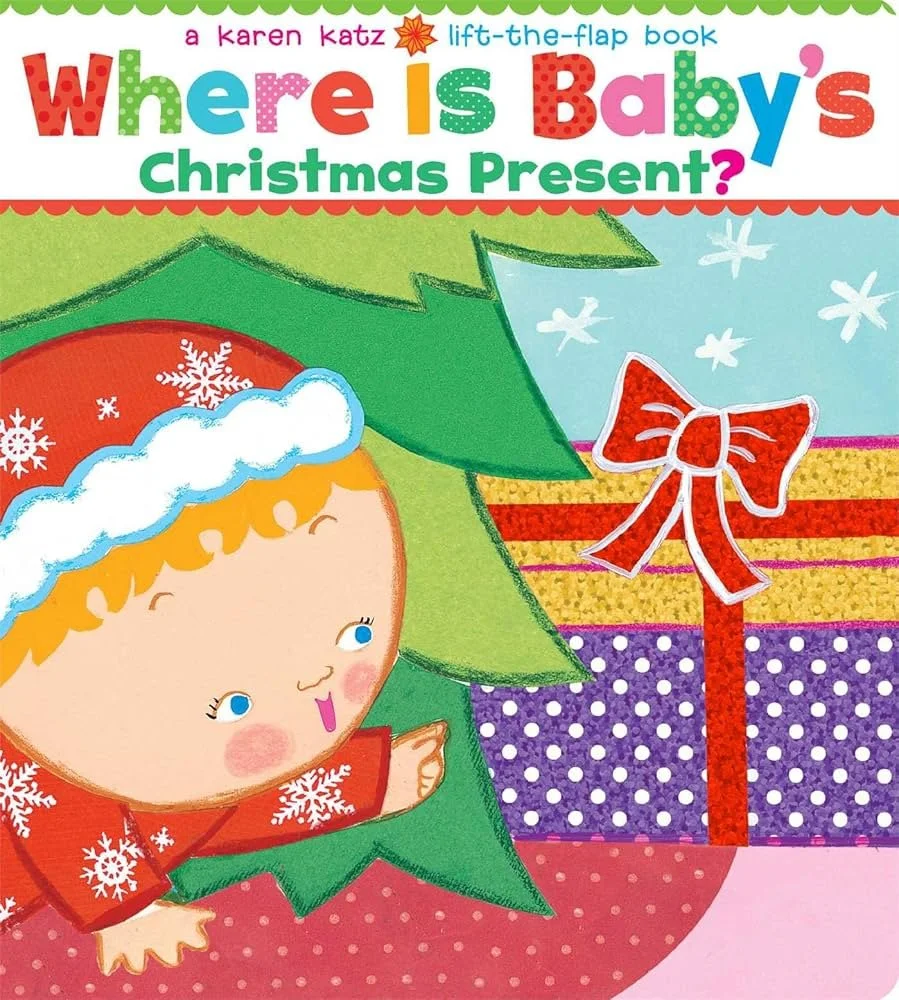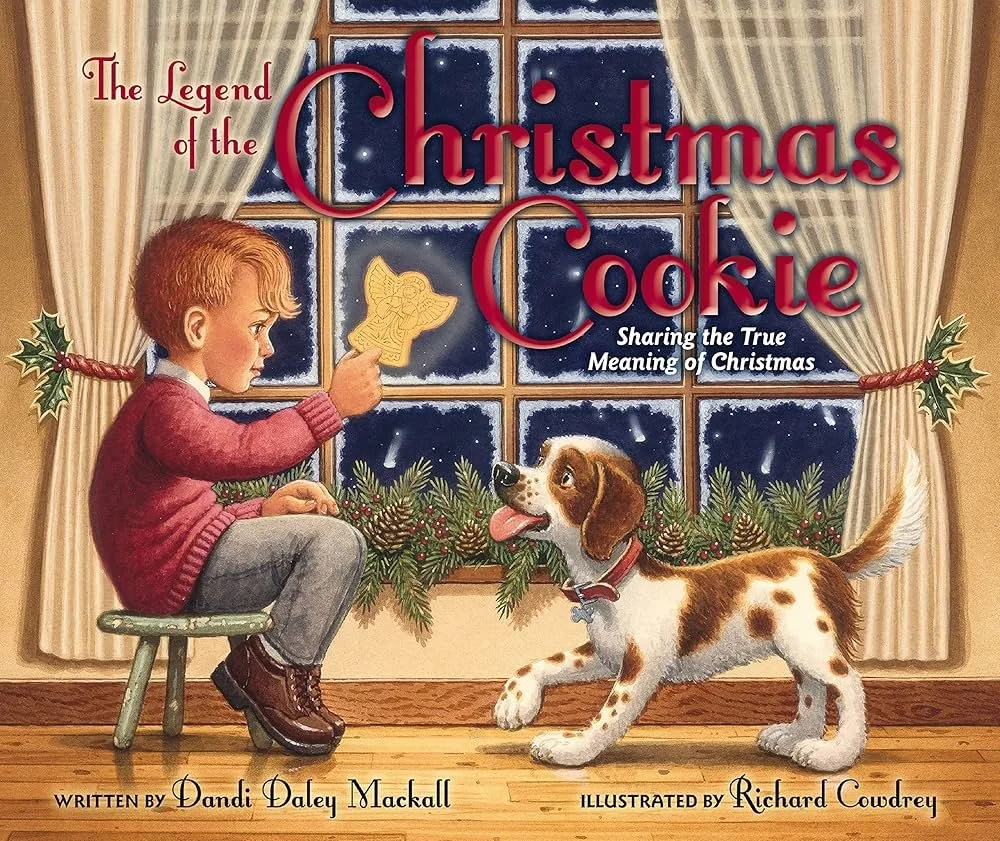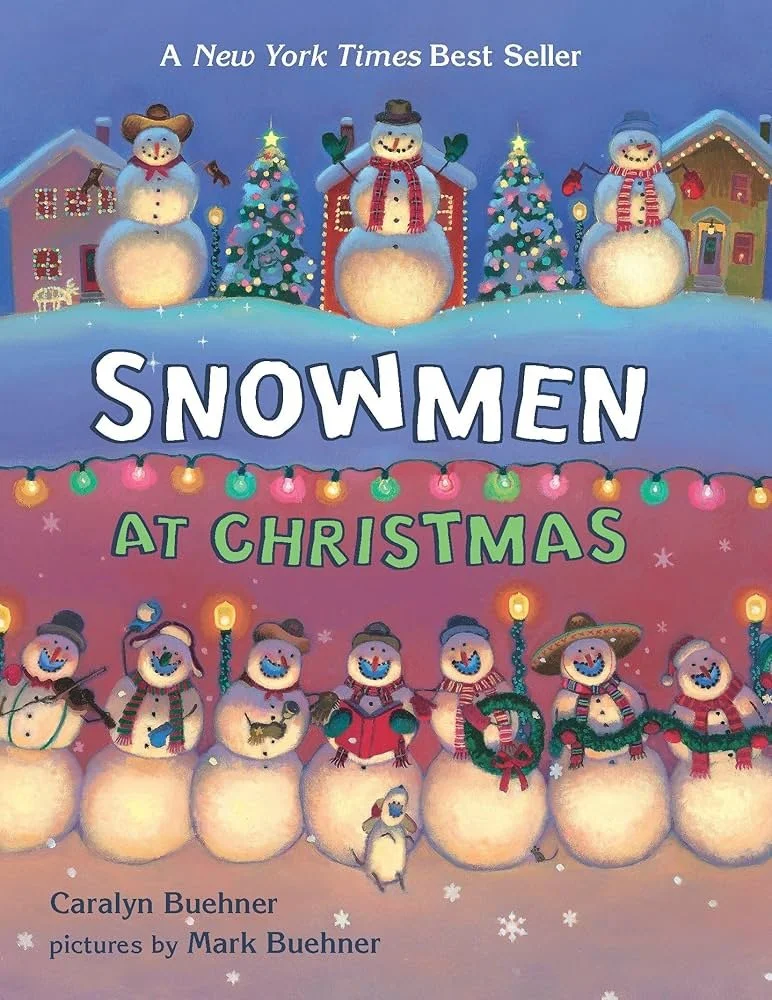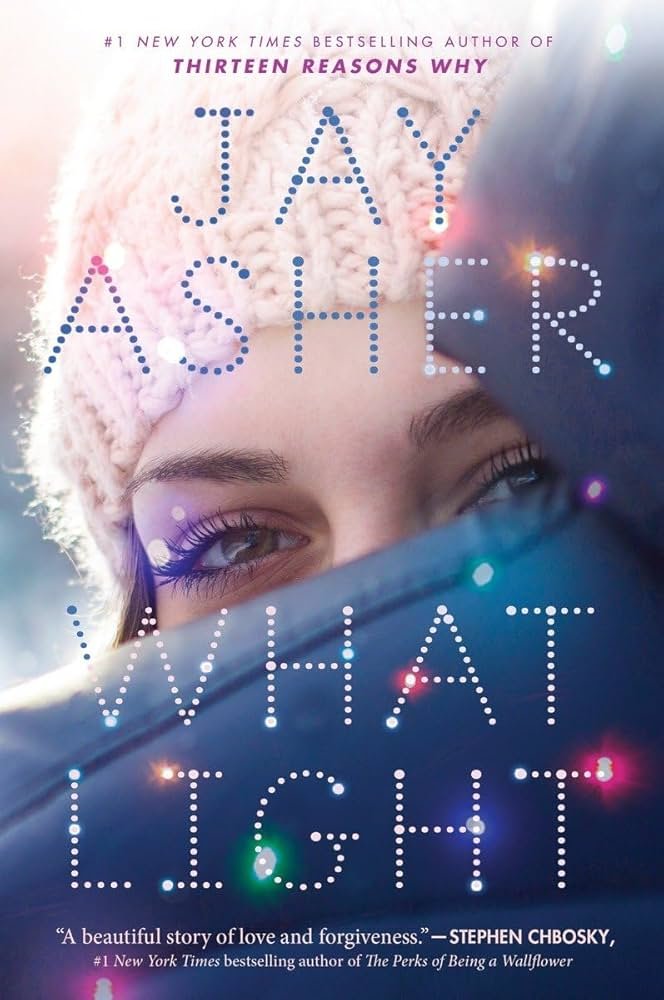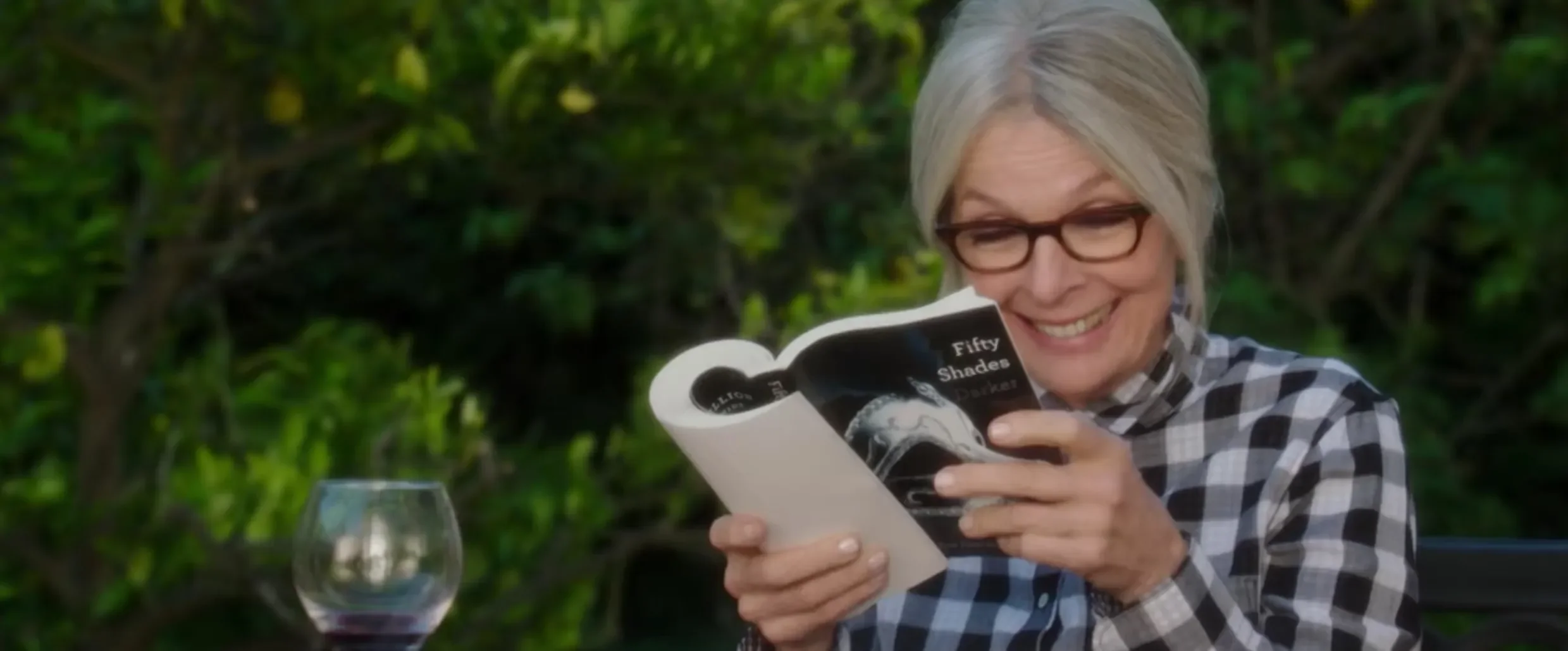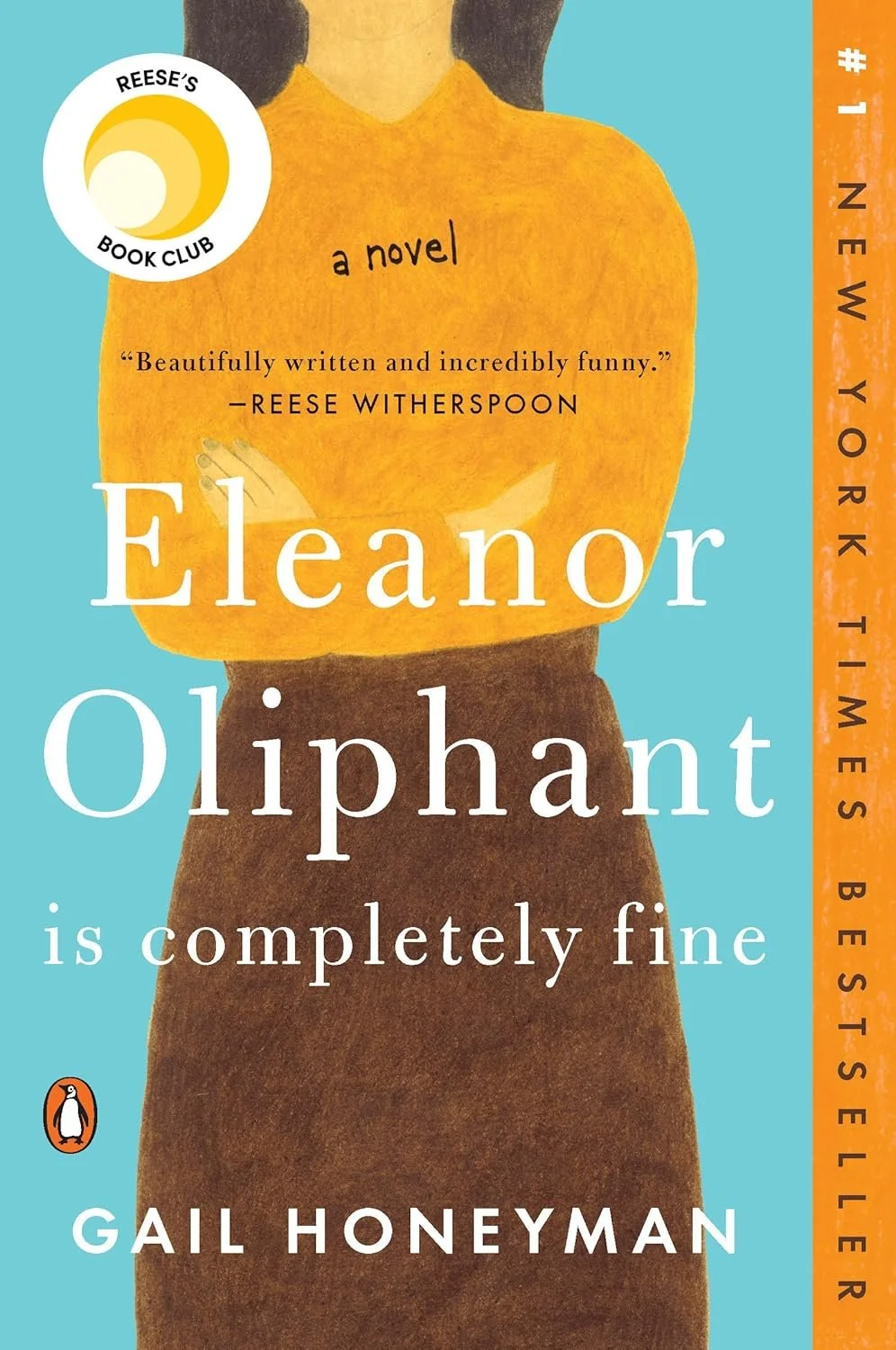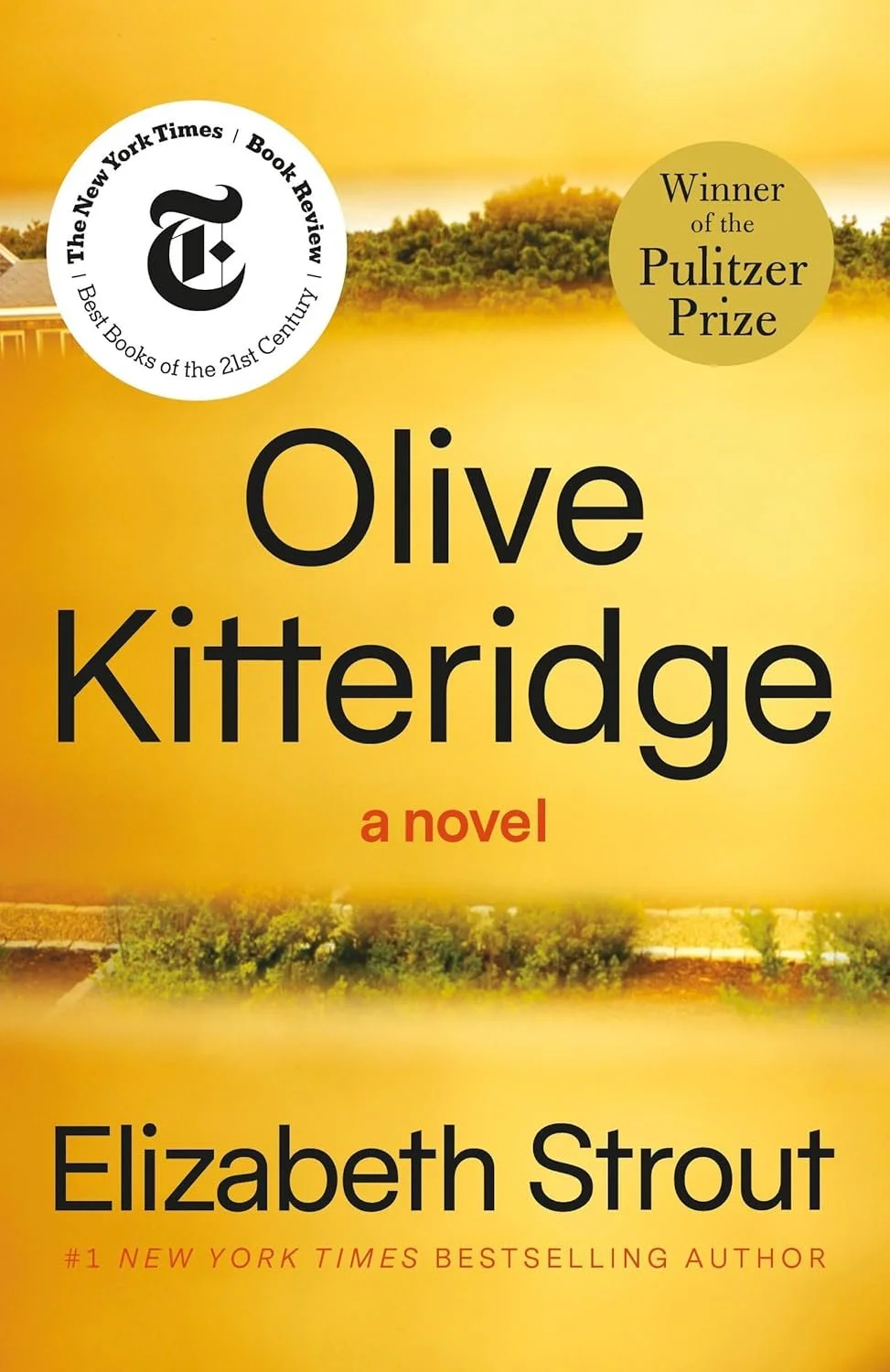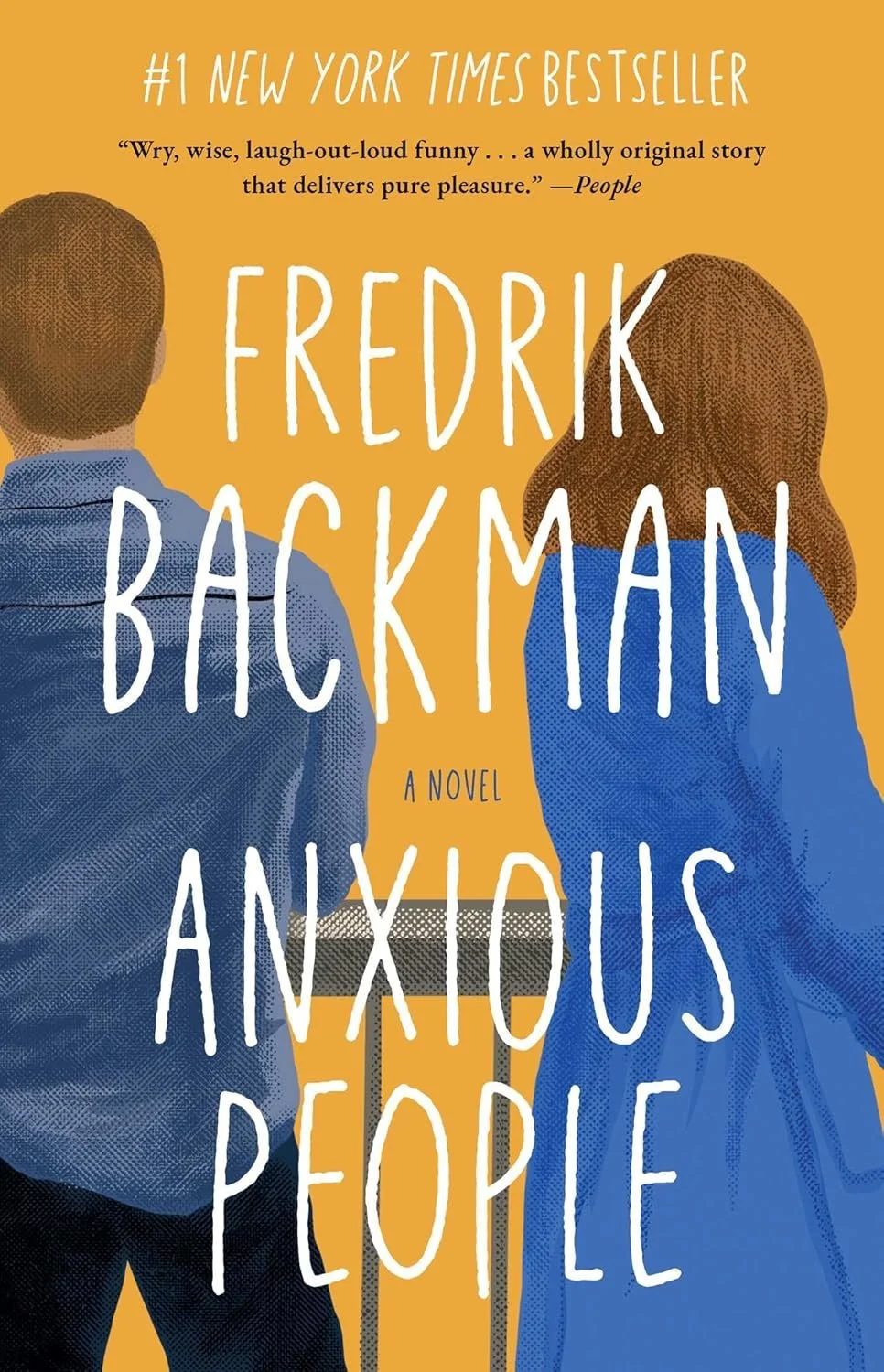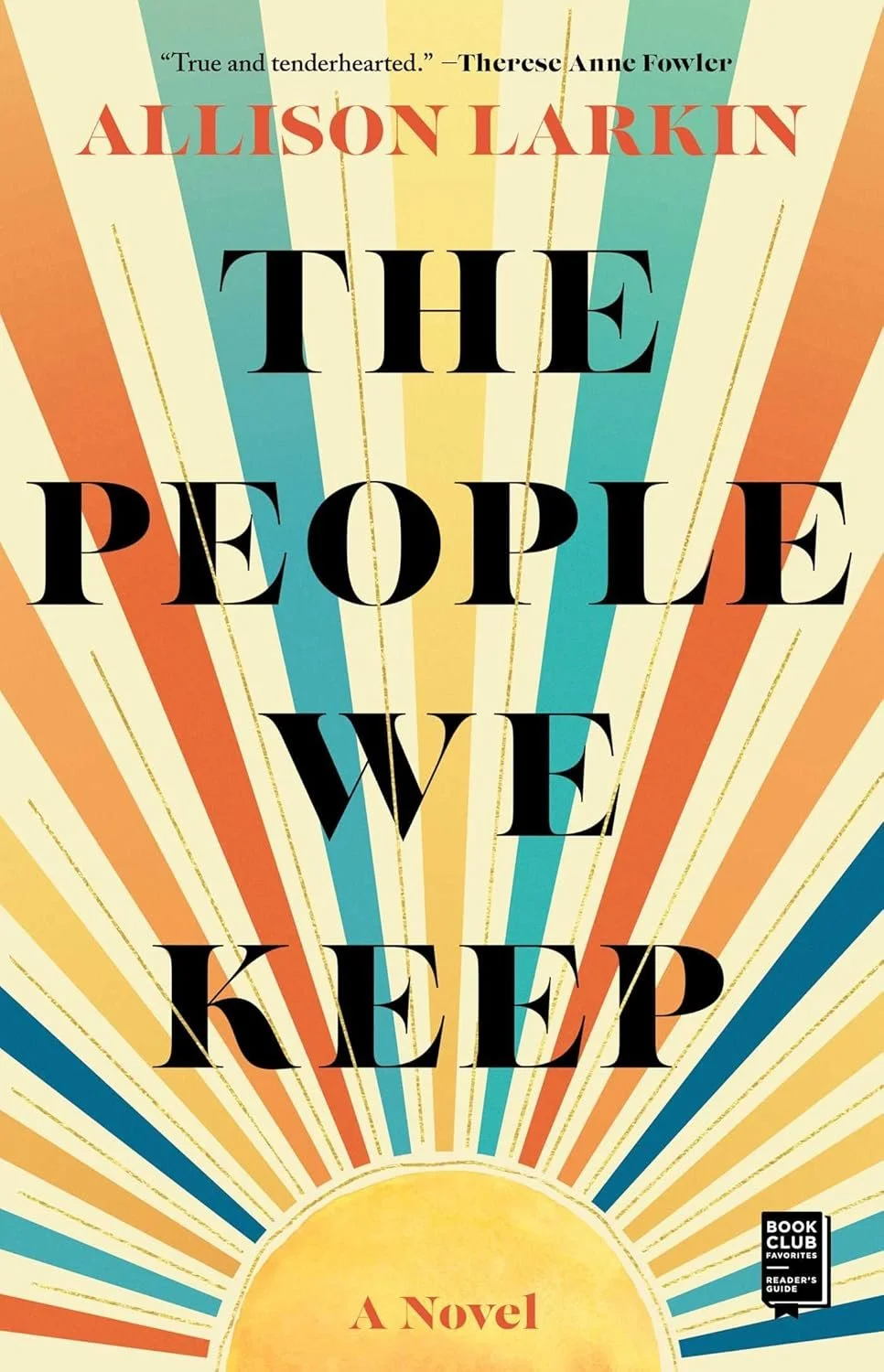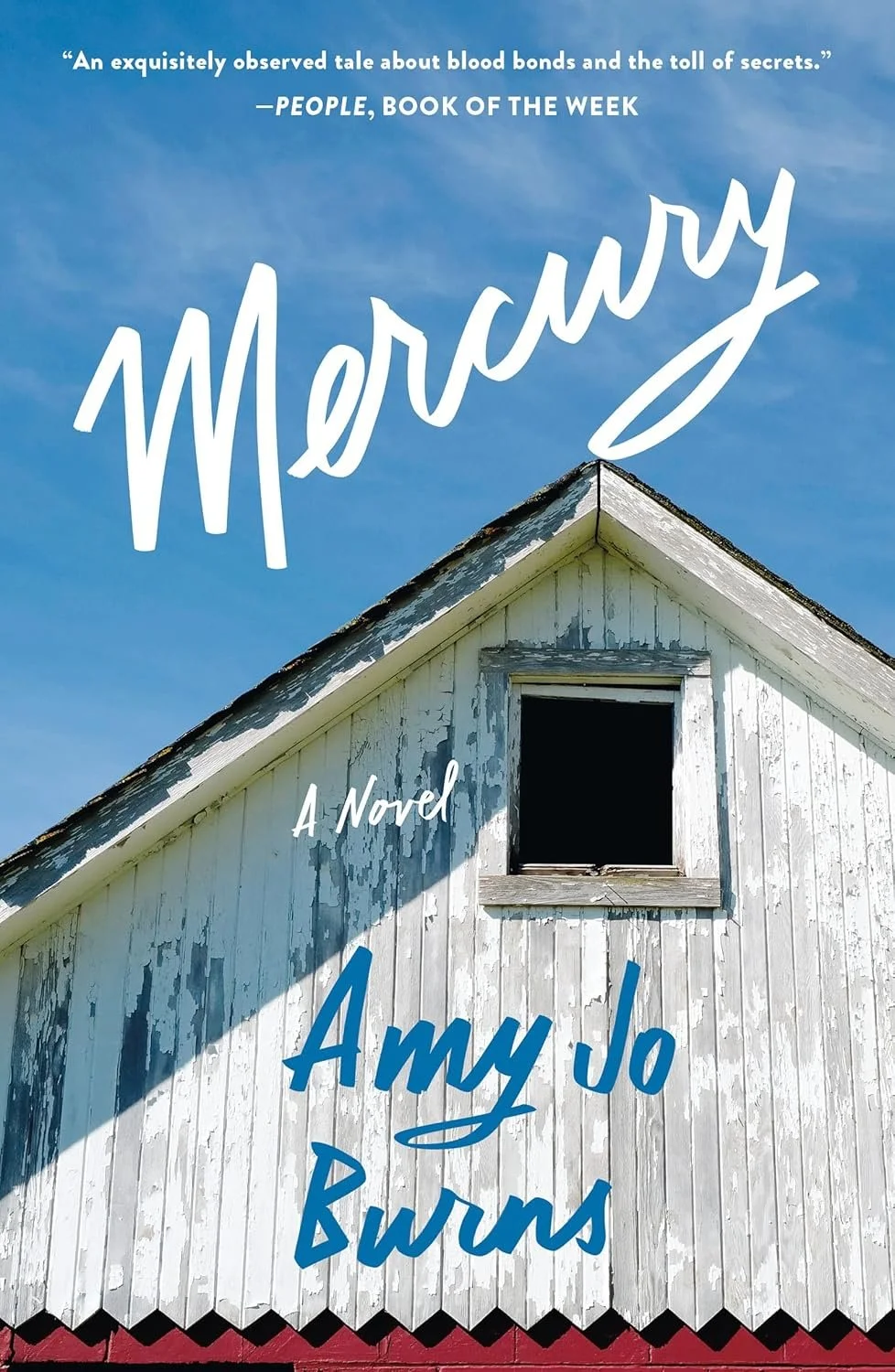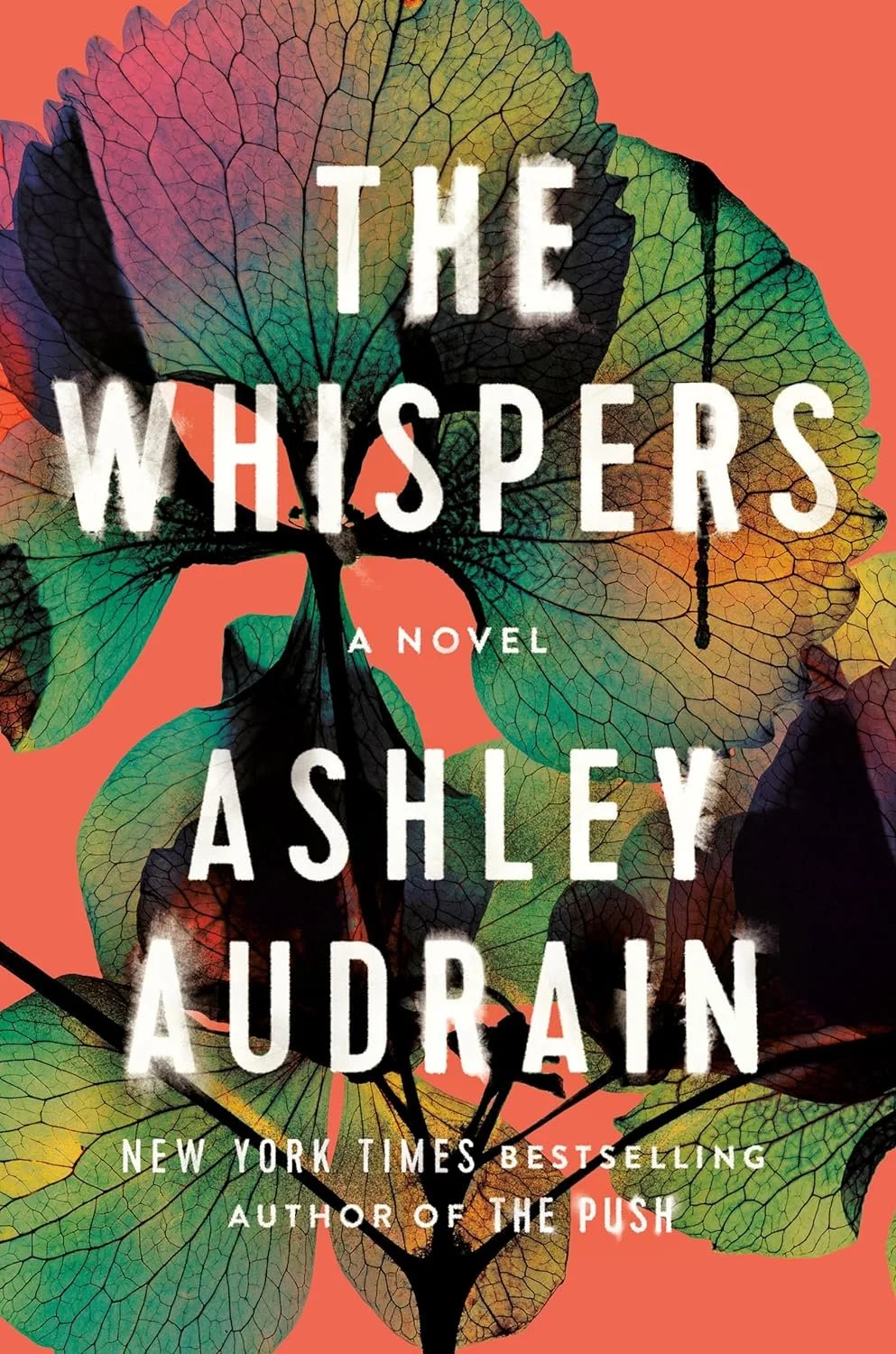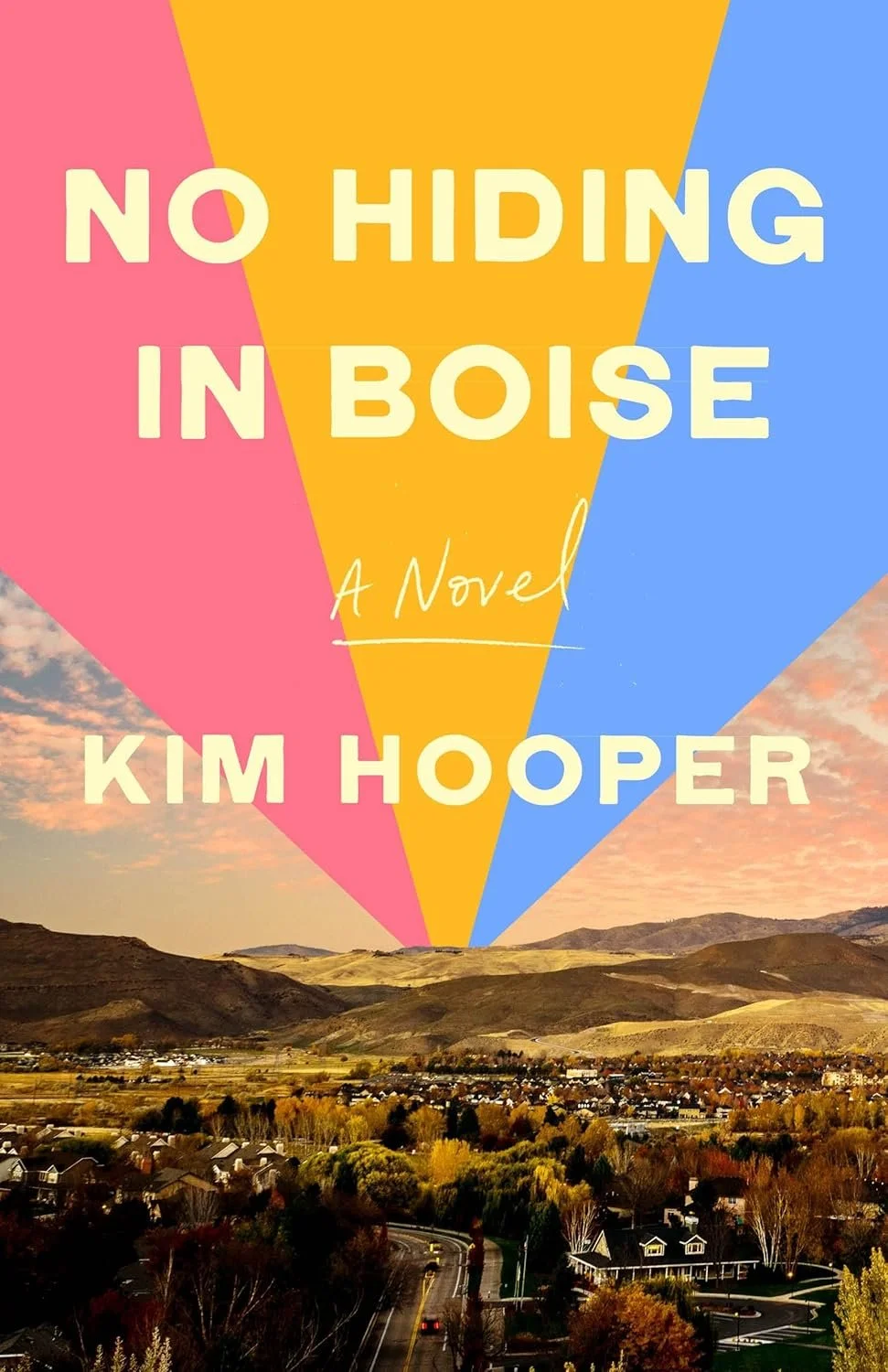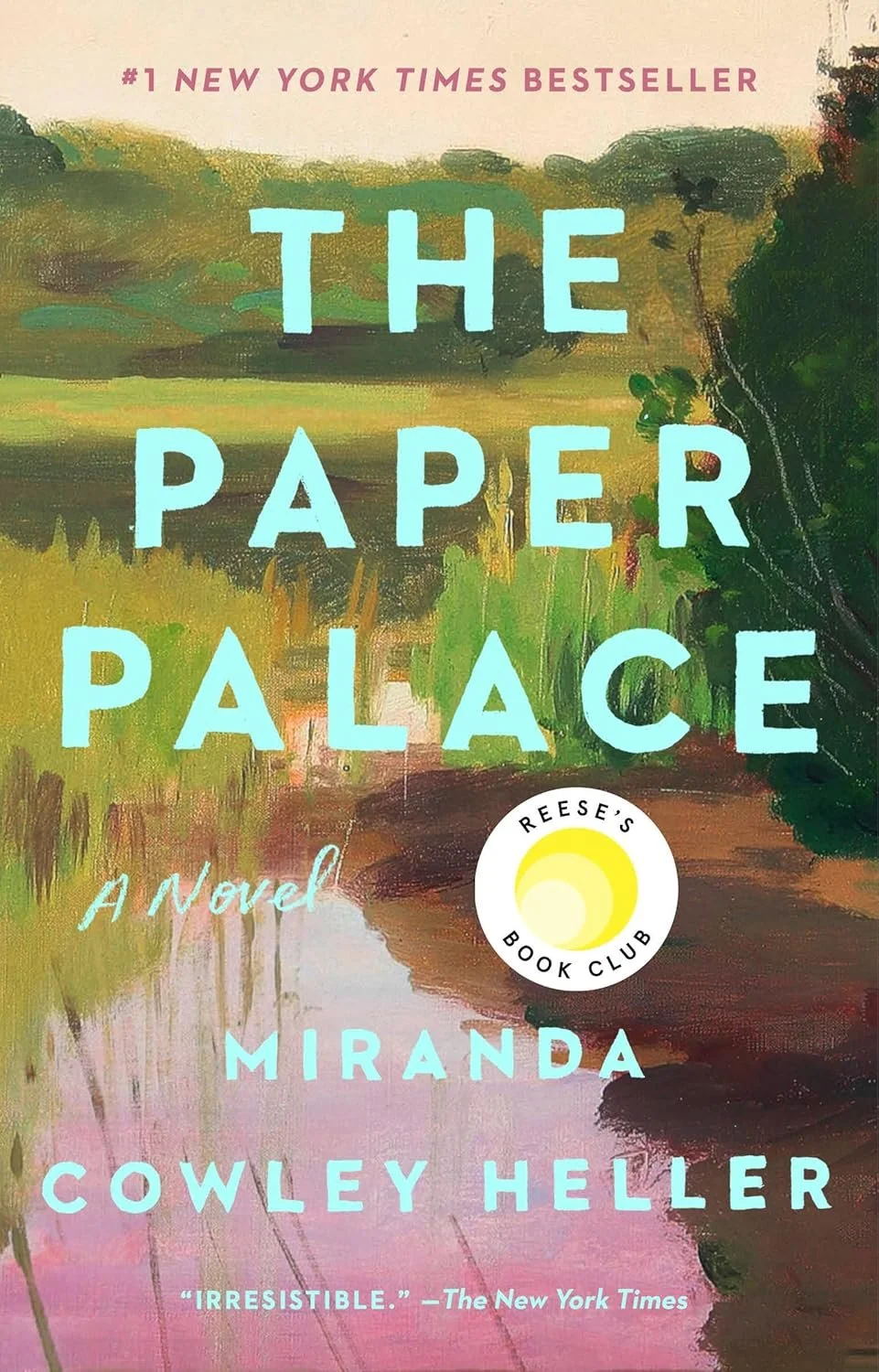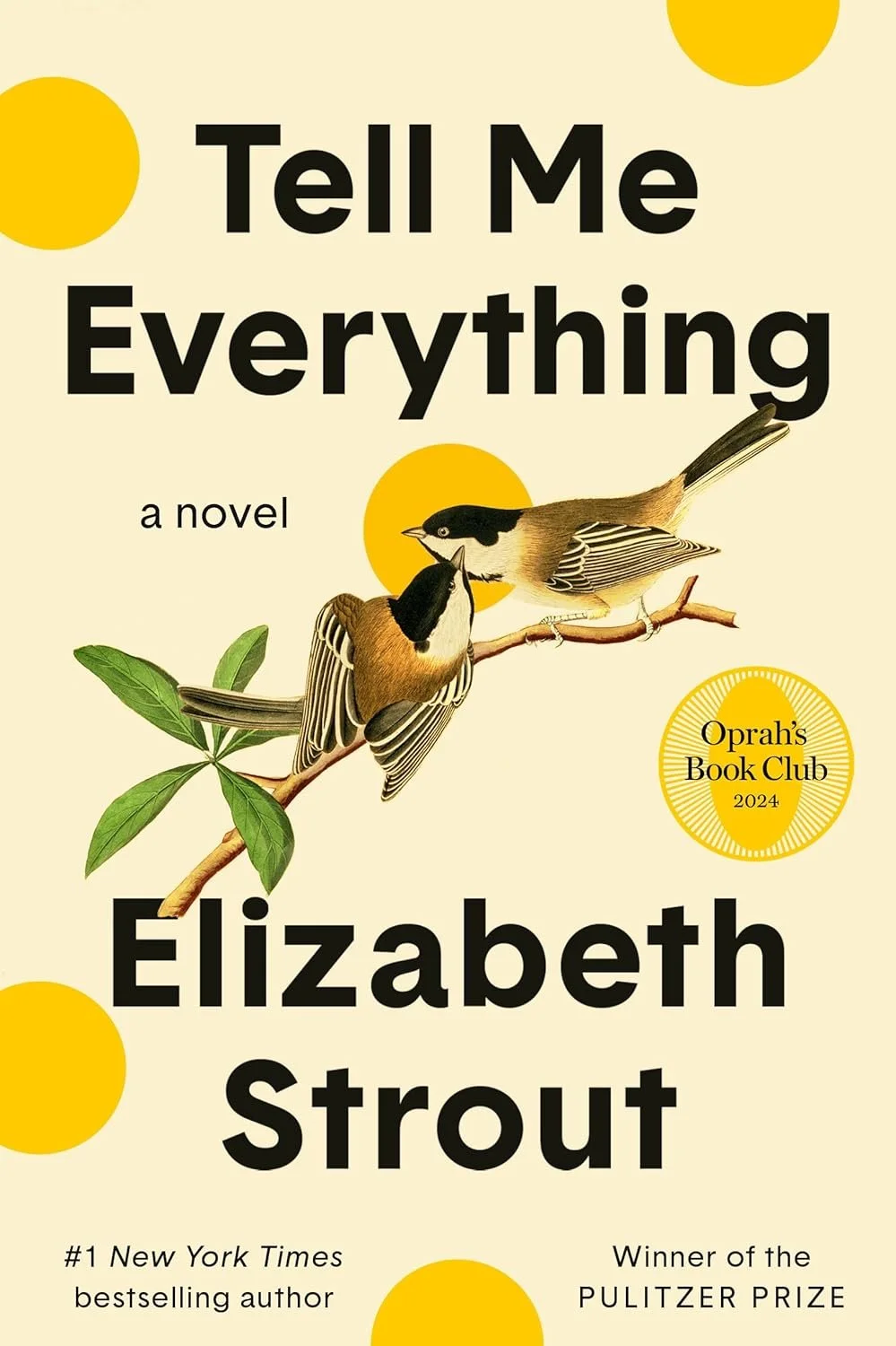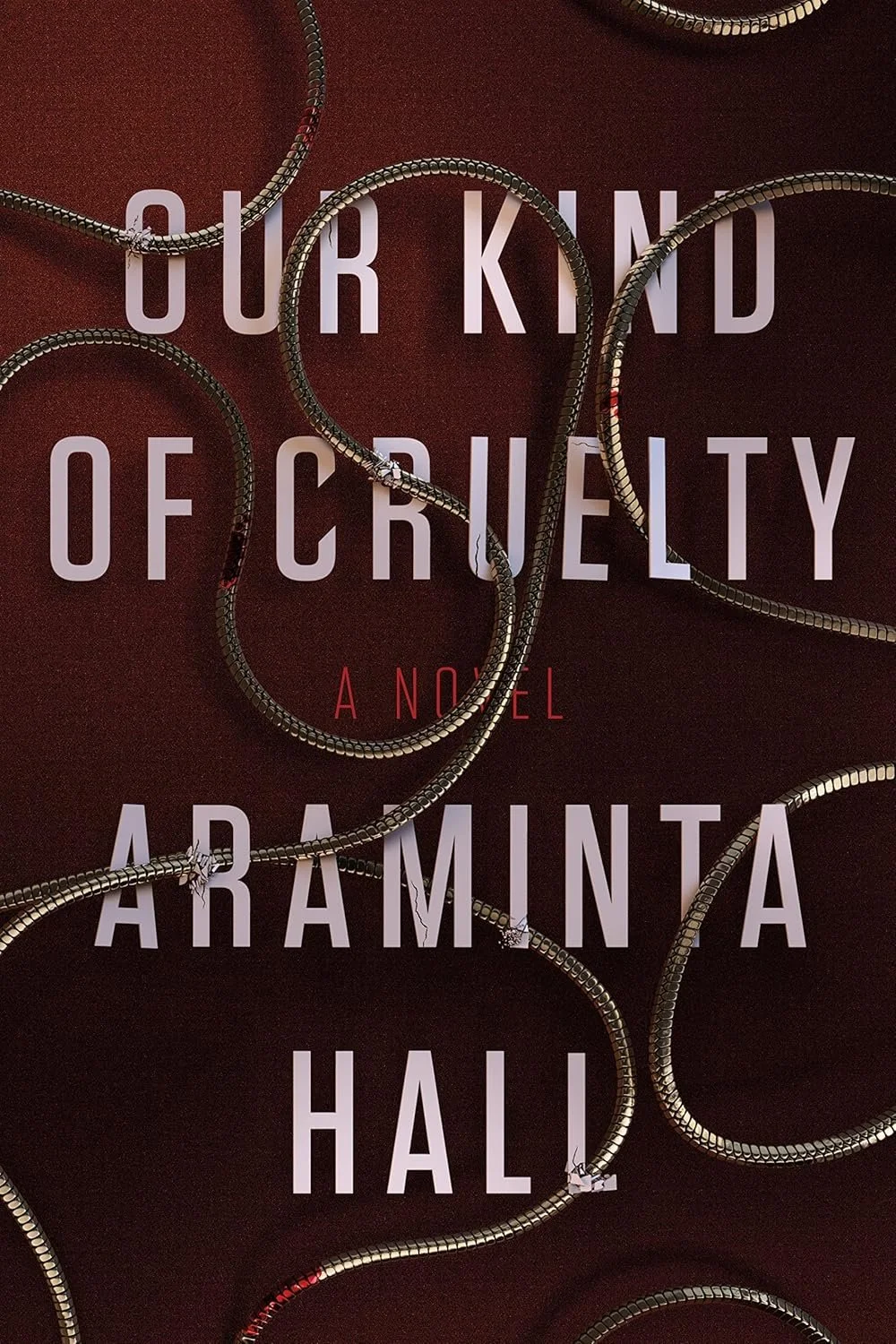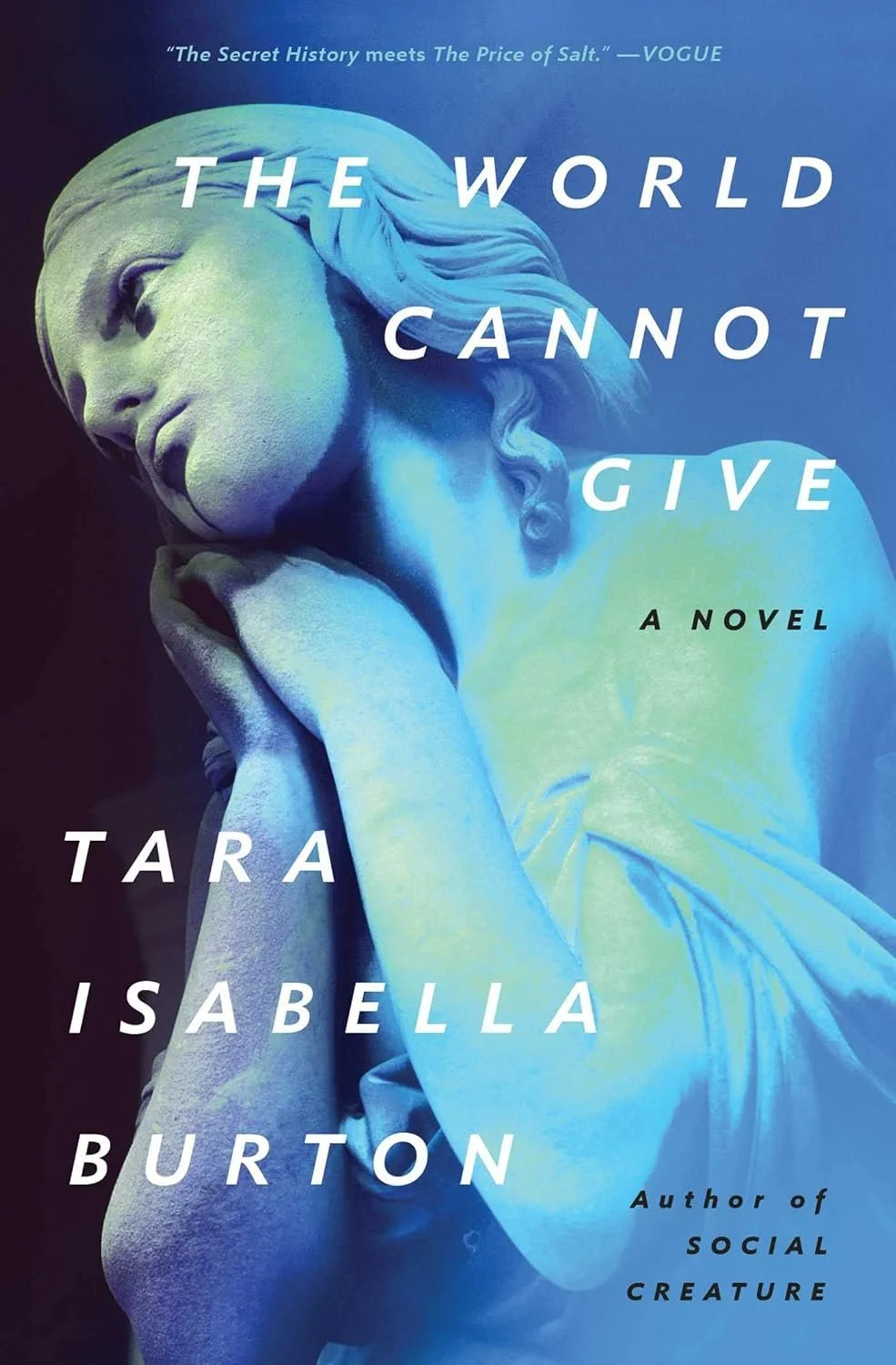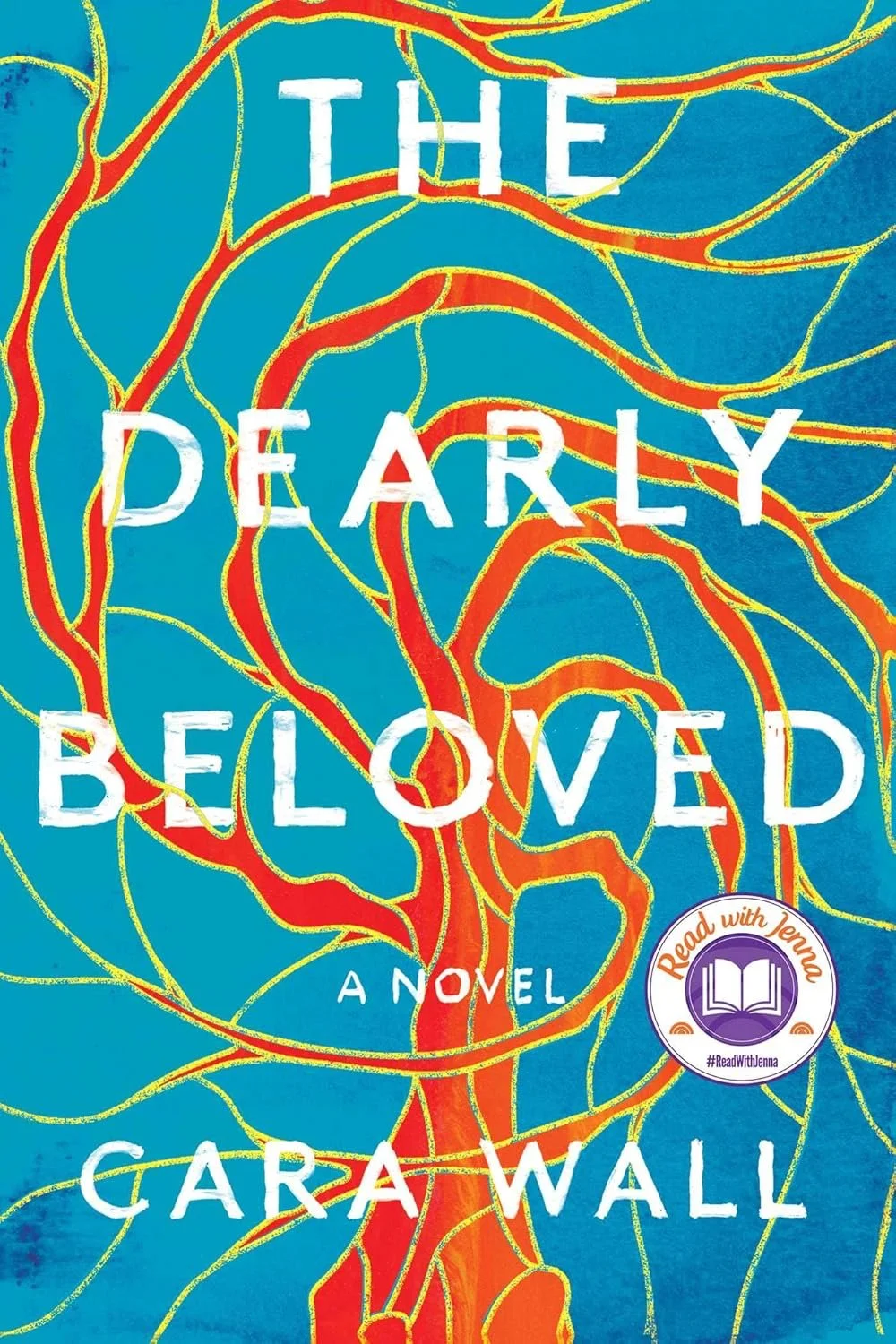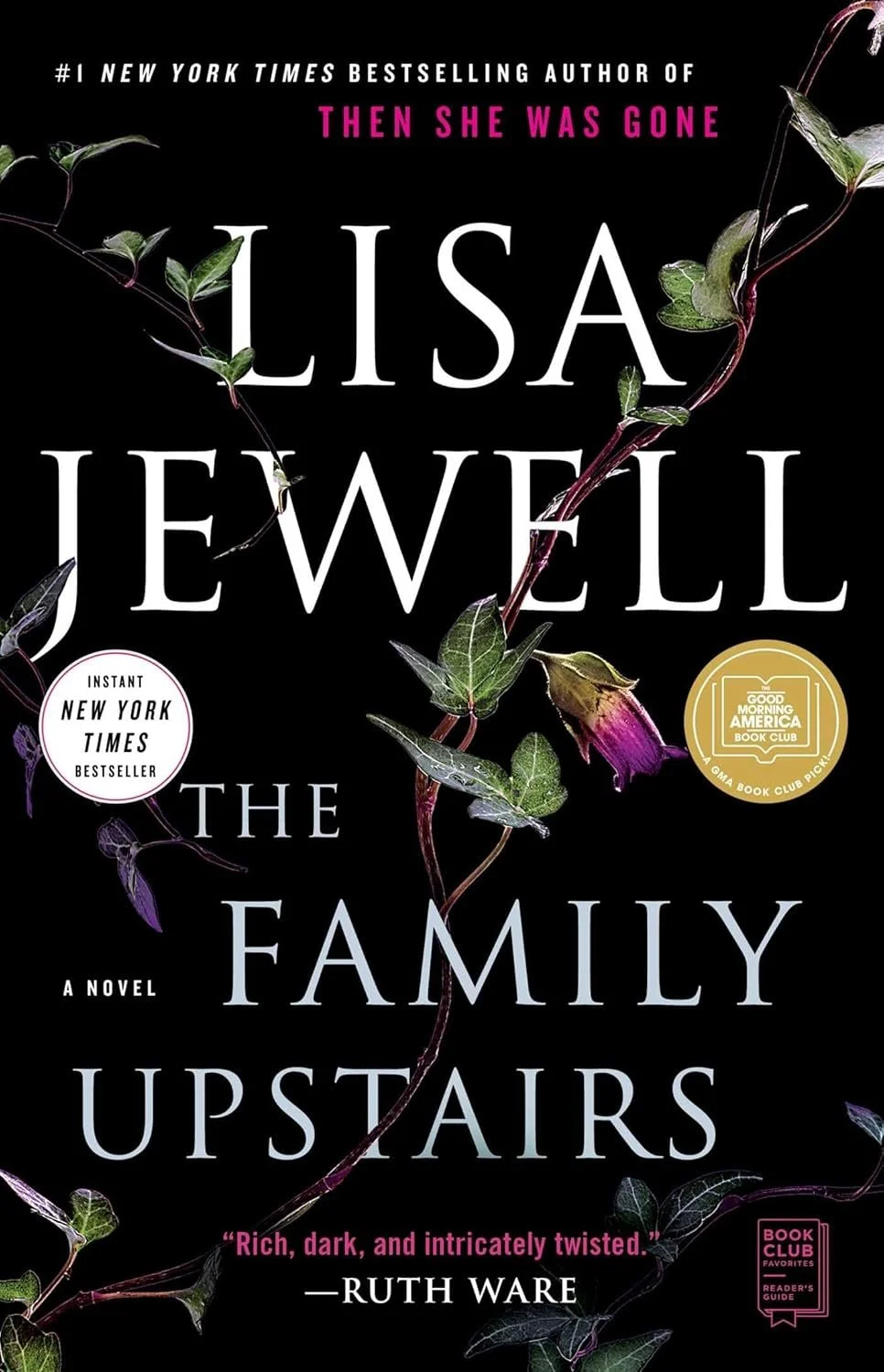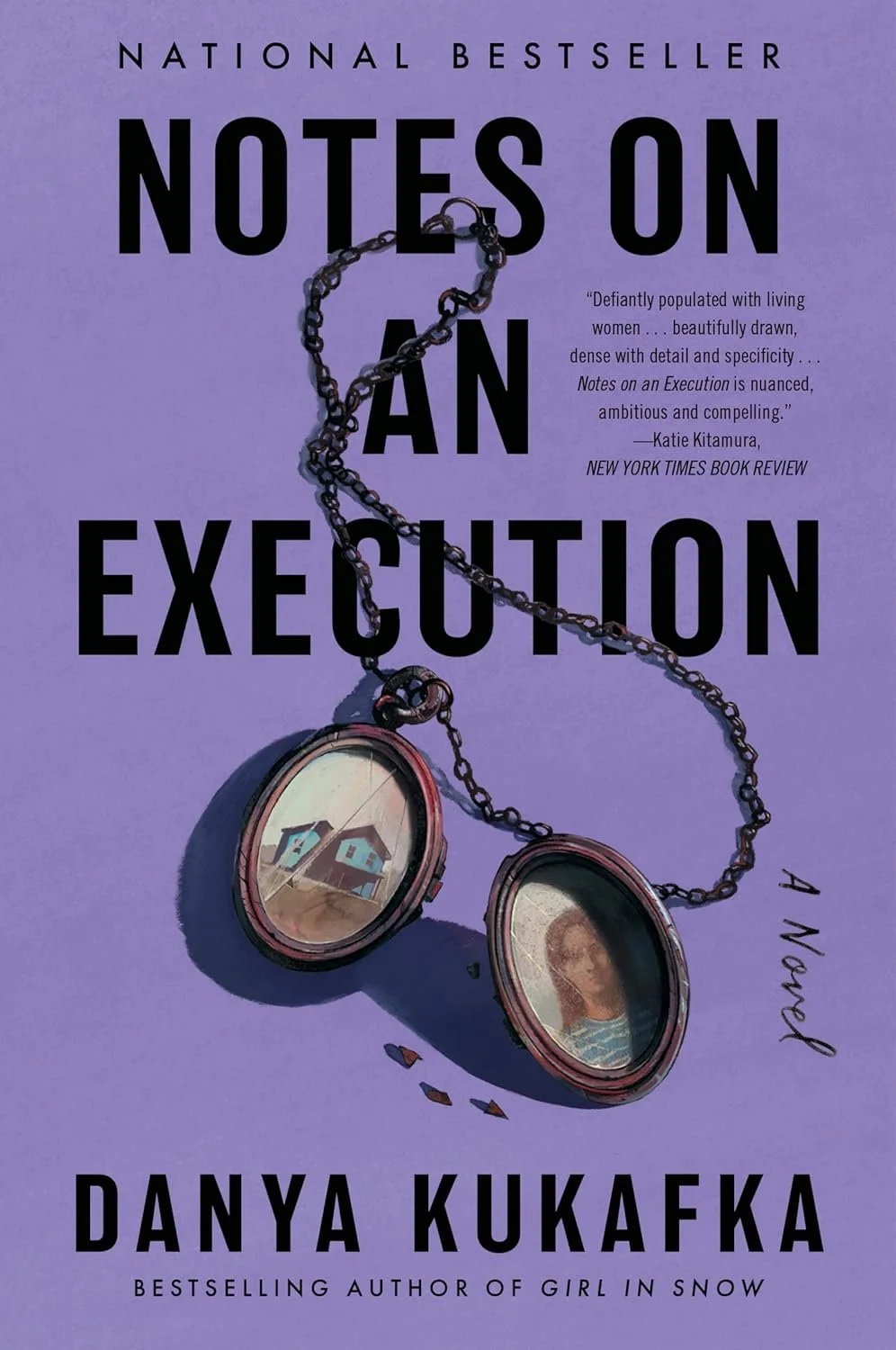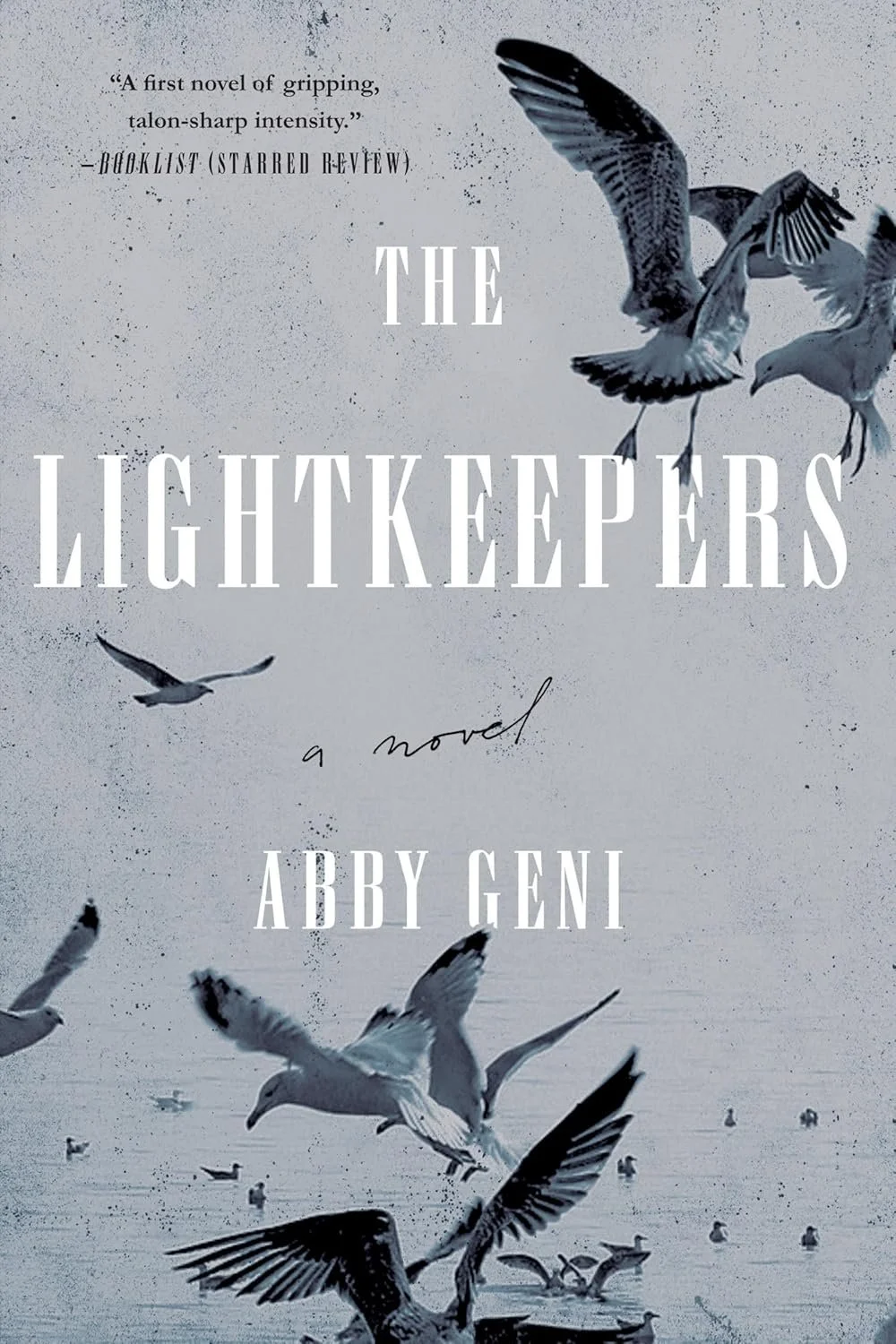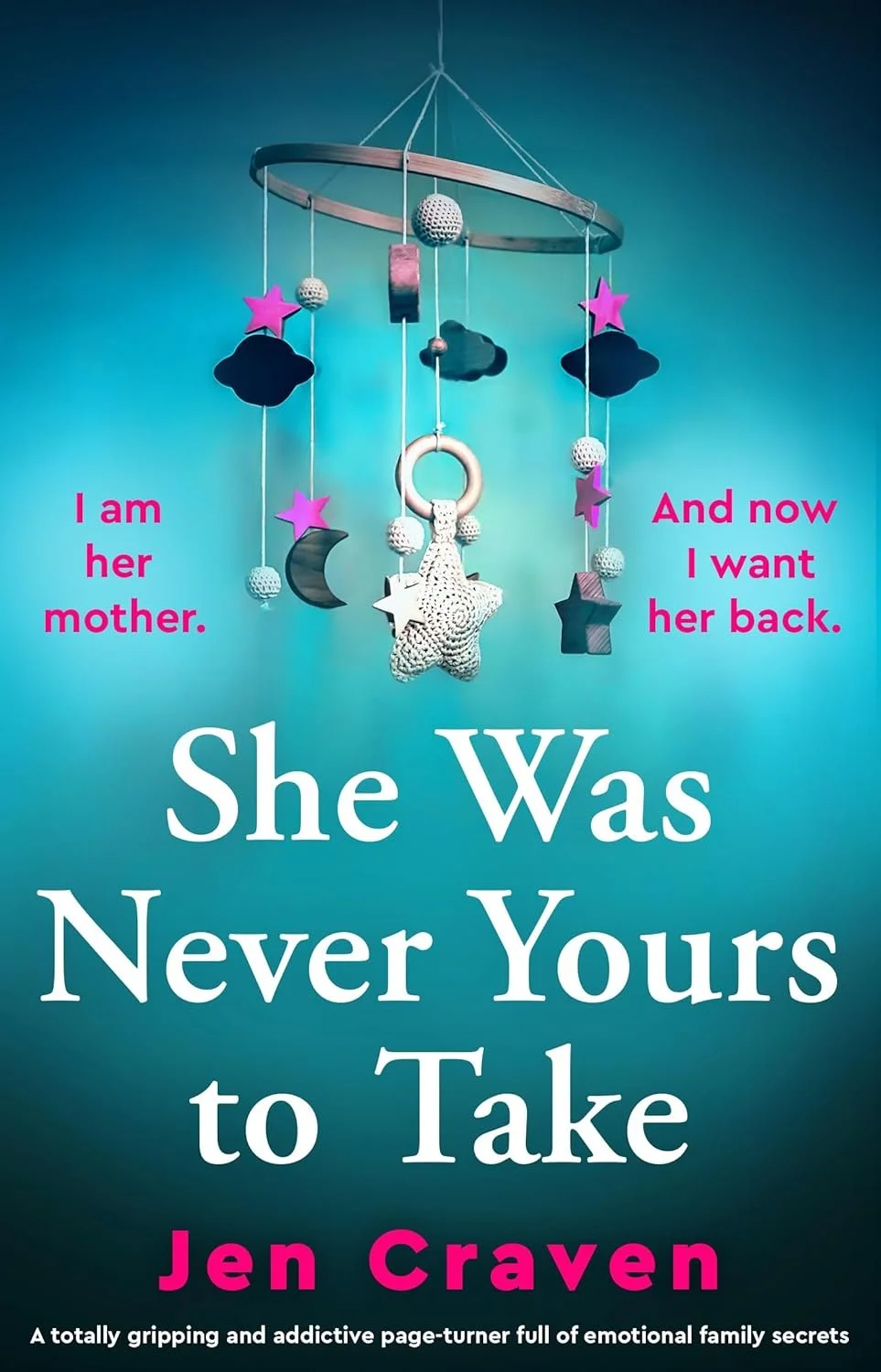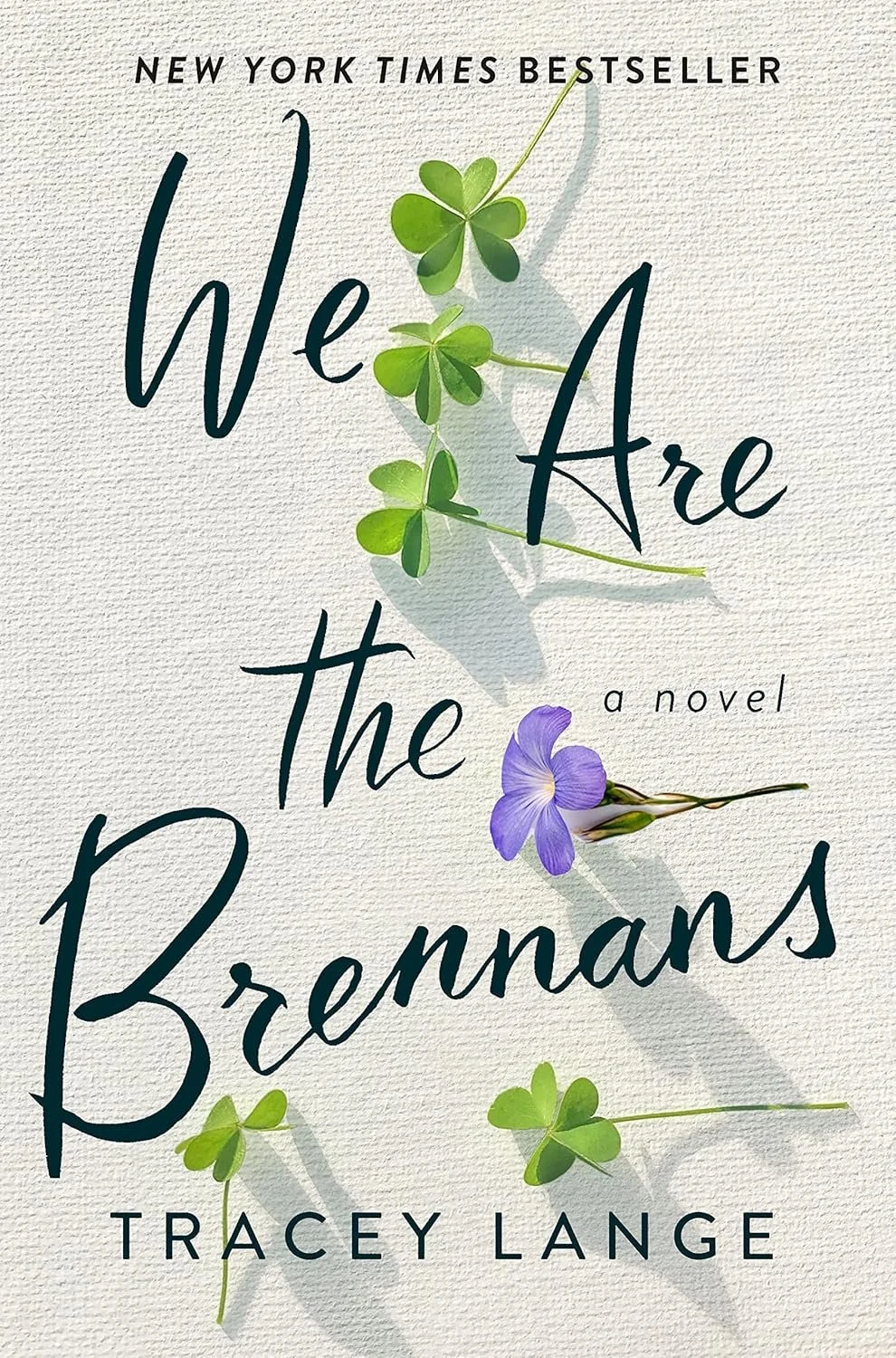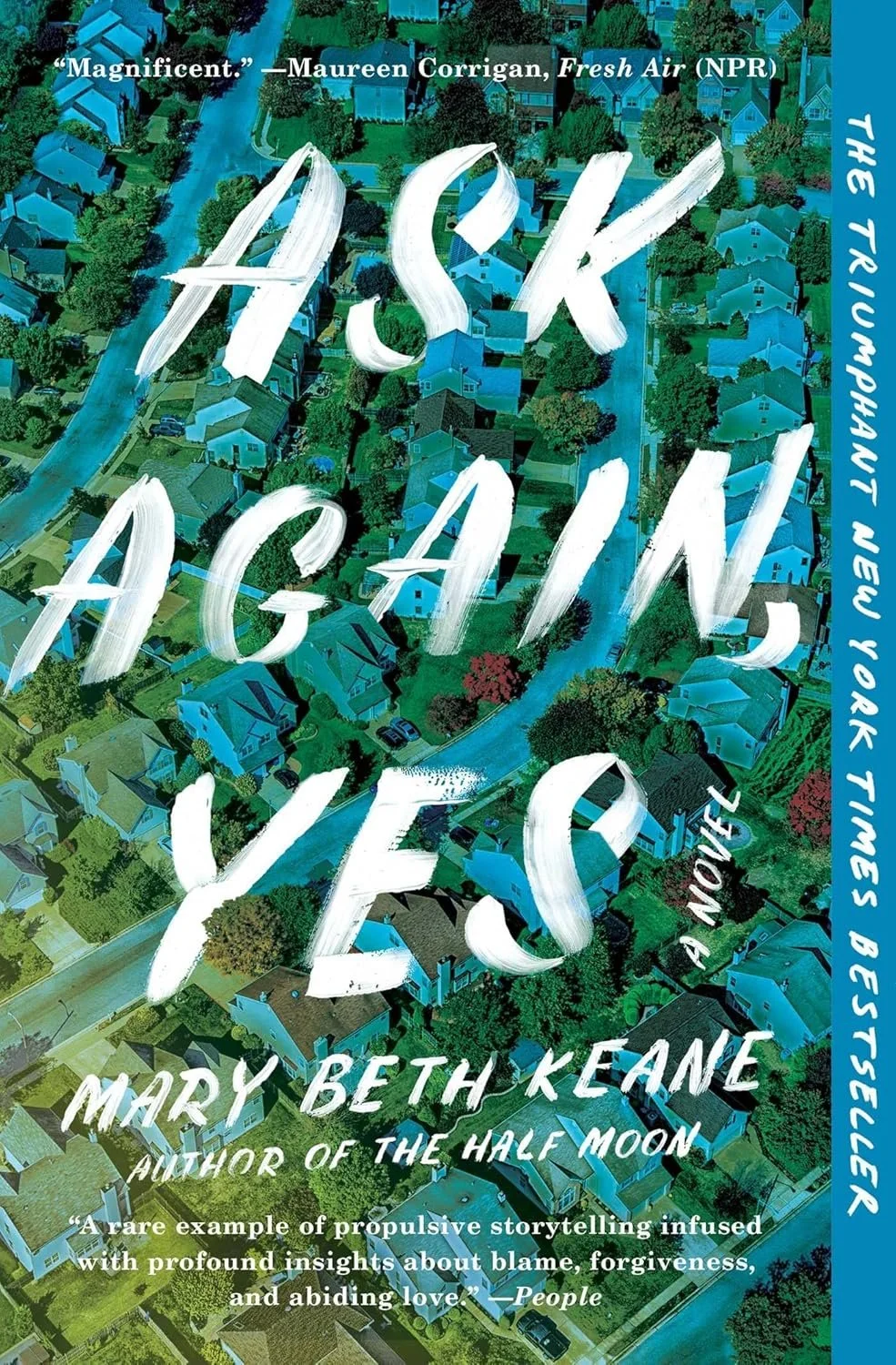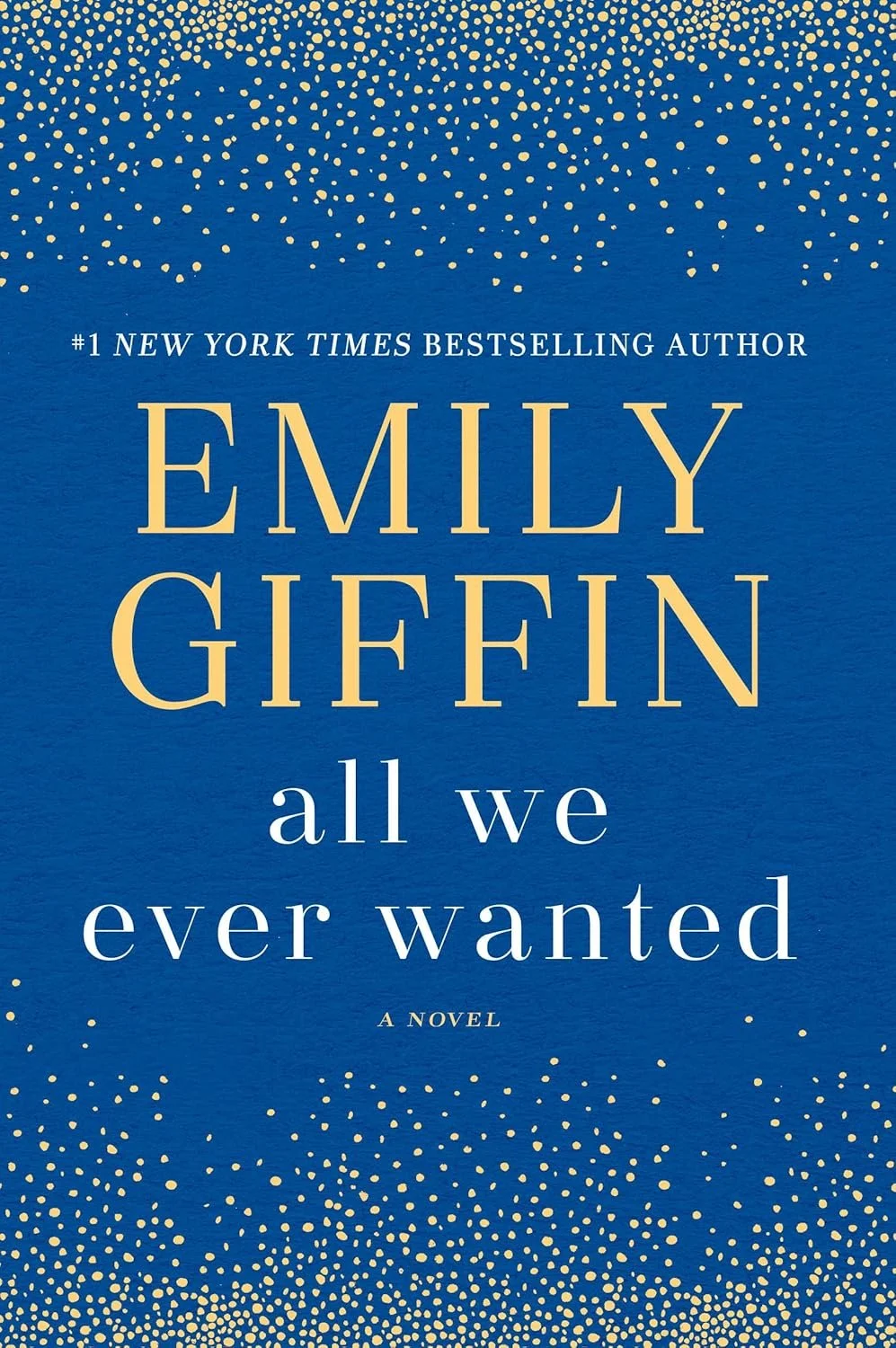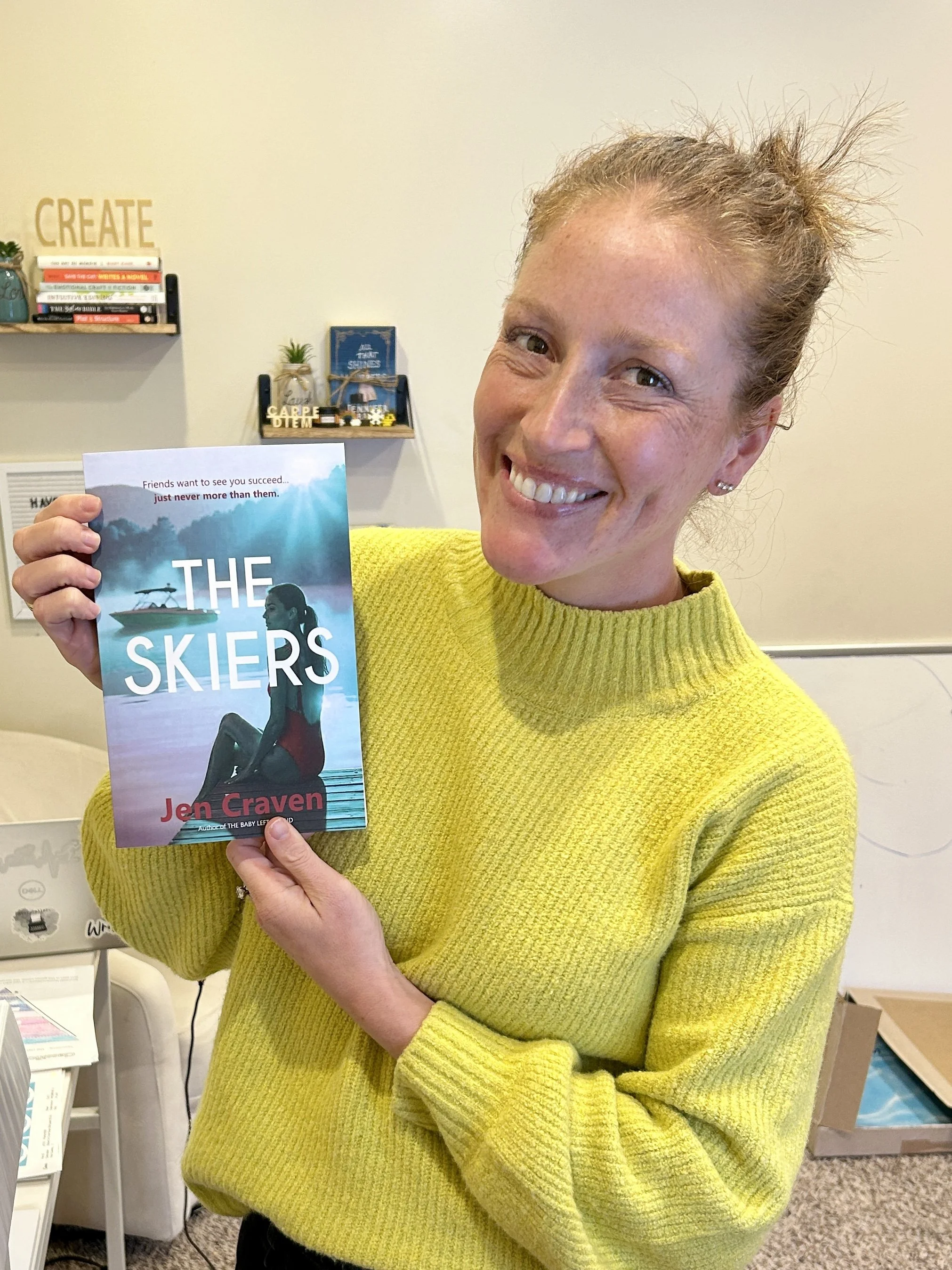Messy Families, Holiday Edition: 6 Books That Prove No Gathering is Perfect
Ah, the holidays — that magical time when families gather, emotions simmer, and the turkey isn’t the only thing getting roasted.
Between the group texts, the travel chaos, and the side-eye across the dinner table, the season can feel… well, a little dramatic. And that’s exactly why I love curling up with a book about families whose gatherings are even messier than my own.
So grab a blanket, pour something strong, and enjoy these six novels that prove dysfunction can be delicious — especially when it’s someone else’s.
1. All Adults Here by Emma Straub
A matriarch, three grown kids, and enough unspoken tension to fill a Macy’s parade balloon. When a sudden accident jolts Astrid Strick into reexamining her choices, her adult children descend on their small hometown — and the result is an honest, heartwarming (and often funny) look at what happens when families finally say the quiet parts out loud.
2. The Most Fun We Ever Had by Claire Lombardo
Four sisters, one sprawling Chicago family, and decades of complicated love. This is the kind of multi-generational saga you want to savor, even when the characters are driving you crazy. With its sharp humor and emotional depth, it perfectly captures that “we love each other, but wow, we’re exhausting” family energy — holiday edition or otherwise.
3. Pineapple Street by Jenny Jackson
Think Succession, but with holiday decor and trust funds. Three women — two sisters and one sister-in-law — navigate wealth, privilege, and family expectations in Brooklyn’s toniest zip code. Every dinner party comes with passive-aggressive comments and perfectly chilled Chardonnay. It’s glossy, gossipy, and surprisingly tender underneath all that polish.
4. We Are the Brennans by Tracey Lange
When Sunday Brennan crashes her car and returns home after five years away, her tight-knit Irish Catholic family welcomes her back with love… and a lot of unresolved tension. This one has all the makings of a perfect family-drama binge: guilt, forgiveness, loyalty, and the ache of trying to rebuild what’s been broken. Bonus points if you read it while avoiding your own family group chat.
5. The Celebrants by Steven Rowley
A group of college friends gathers for mock “living funerals” — a quirky tradition that helps them process life, loss, and the complicated beauty of chosen family. It’s witty, poignant, and feels like a warm hug laced with bittersweet nostalgia. Not technically about a holiday dinner, but it’s absolutely about gathering, reconnecting, and realizing that love doesn’t always look the way we expect.
6. She Was Never Yours To Take by Jen Craven (that’s me!)
When sixteen-year-old Violet is forced by her controlling mother to give up her baby — to her older sister, Corinne — the family secret reshapes their lives for years. Over a decade later, Violet wants her daughter back, and the truth threatens to destroy everything they’ve built.
If your holiday table has ever included simmering resentment and forced smiles — this one’s for you.
Because Let’s Be Real…
No gathering is perfect. Someone will burn the rolls, bring up politics, or “accidentally” mention that one family secret everyone agreed to forget. But maybe that’s the point — love isn’t neat, it’s messy. It’s imperfect. It’s real.
And if you can laugh (or cry) about it through a good book? Even better.
So here’s to dysfunctional families — in fiction and beyond — for keeping things interesting this holiday season.
How to Find Time to Read During the Holidays: 5 Quick Page-Turners
December is chaos — twinkle lights, travel plans, endless to-do lists, and family members who keep asking where the tape went (it’s always right in front of them). Somewhere between the gift wrapping and cookie baking, your reading life starts to collect dust like that Elf on the Shelf you forgot to move three nights ago.
But here’s the truth: you can still read — you just need the right kind of book.
Enter: the fast-paced, twisty, emotionally charged domestic suspense novel.
These are the perfect holiday reads because they grab you by the throat (in a good way), keep you turning pages long after you should’ve gone to bed, and make you forget that you were supposed to preheat the oven 20 minutes ago.
Here are five bingeable thrillers to keep you company through the holiday madness — because who doesn’t love a little family drama and moral ambiguity with their hot cocoa?
1. The Housemaid Is Watching by Freida McFadden
If you like your thrillers unputdownable and just a little bit unhinged, Freida McFadden has your back. The Housemaid series is like popcorn — one handful leads to another, and suddenly it’s midnight and your wrapping paper is still untouched. Twists, secrets, and revenge? Yes, please. Perfect to read before the film adaptation makes it's debut.
2. The Fury by Alex Michaelides
A secluded Greek island. A glamorous group of friends. A murder (of course). This one reads like Knives Out meets Big Little Lies — stylish, smart, and totally bingeable. The short chapters practically turn themselves, which is exactly what you need between shopping trips and sugar-cookie meltdowns.
3. The Only One Left by Riley Sager
Creepy mansion on a cliff? Check. Unreliable narrator? Double check. Shocking twist that will make you gasp out loud and scare your dog? Triple check. Riley Sager’s latest gives major gothic vibes, and once you start, you’ll find yourself saying, “Just one more chapter” until 2 a.m.
4. All the Dangerous Things by Stacy Willingham
Equal parts haunting and heart-thumping, this one’s about a mother obsessed with finding her missing son — and the truths she’s forced to face along the way. It’s dark, deeply emotional, and impossible to put down. Willingham nails the slow-burn suspense that keeps you both anxious and addicted.
5. The Baby Left Behind by Jen Craven
Okay, yes — this one’s mine. But if you like your domestic suspense layered with emotion, secrets, and moral gray areas, it’s the perfect holiday escape. When a newborn is found on our protagonist’s doorstep, she must decide whether to keep him or call the police. It’s fast, tense, and totally bingeable — because even between holiday chaos, you’ll need to know: how is this going to end?
A Few Festive Reading Tips for the Overcommitted
Hide your book inside a holiday magazine. (No one will ever know.)
Audiobooks + gift wrapping = productivity and plot twists.
Ten minutes here, ten minutes there — thrillers are perfect for short bursts of reading.
Pretend you’re “organizing the pantry” and sneak in a few chapters. (Highly recommend.)
Remember: reading counts as stress relief. Doctor’s orders.
So go ahead — pour a little something festive, claim a corner of the couch, and let someone else handle the gravy for once. These twisty page-turners will keep your pulse racing and your spirits high, even if your to-do list is longer than Santa’s.
Because the holidays might be full of surprises — but none are as juicy as the ones hiding in these books.
Sister Stories: Why We Love Books About Siblings
There’s just something about a good sister story, isn’t there? I pick up a book about sisters and suddenly I'm bracing myself — for laughter, for heartbreak, for betrayal, for that quiet, goosebump-y kind of loyalty that only exists between people who’ve known each other since before they knew themselves.
(I say that as if I know first-hand, when in fact I only have one brother…lol!).
Still, what I’ve gathered from books (and friends IRL) is that sisters can be our first friends and our favorite enemies. They know exactly how to comfort us and exactly how to get under our skin. That deep, complicated, can't-quit-you connection with someone who sees your best and worst and still shows up. That’s why these stories hit so hard. They’re not just about biology; they’re about belonging, rivalry, forgiveness, and the kind of history you can’t outrun.
That’s why I wrote about a complicated sister dynamic in She Was Never Yours To Take. I loved exploring the high stakes and tension between these two women who love fiercely, and whose pasts are so intertwined.
Here’s some of my faves from the “Sister Story” micro-genre. What are your go-tos? Message me…I love getting book recs!
Blue Sisters by Coco Mellors
A luminous, emotional story about three sisters grieving their fourth. This novel explores addiction, loss, ambition, and the messy steel-thread bond that both binds and wounds. Raw, stylish, and brimming with heart, it's a modern sister epic.
My Sister’s Keeper by Jodi Picoult
A classic in emotional family drama, this book follows a girl conceived as a genetic match for her sister with leukemia. It is heartbreaking and moral-complicated, exploring autonomy, sacrifice, and how far a family will go to save one of their own.
Sisterland by Curtis Sittenfeld
A compelling novel about twin sisters with psychic abilities who grow up and grow apart — until one shares a world-shifting prophecy. This story digs into identity, resentment, and the haunting intimacy of twins who know each other too well.
Hello Beautiful by Ann Napolitano
A stunning, modern homage to Little Women, this novel follows four sisters whose love forms a cocoon — until life, trauma, and complicated marriages test the seams. Tender, literary, and emotionally sweeping, it captures both devotion and fracture.
She Was Never Yours To Take by Jen Craven (that’s me!)
A twisty, emotional domestic drama where a long-buried secret between two sisters threatens to shatter their family. When Violet—forced years ago to give up her baby to her older sister—returns to reclaim her daughter, loyalties buckle and truth claws its way into the light. A gripping look at motherhood, identity, and the price of family loyalty. (And yes, this one's mine — and perfect for fans of layered, emotionally tense sister stories.)
Want some more sister book recs? This post gives you some more to try!
18 Holiday Books for Kids and Teens (Broken Down by Age!)
If your kids are anything like mine, they’re a little book obsessed (in the best way). We’re always on the look for good reads, and this time of year, they’re all about Christmas stories.
Whether you’re building family reading traditions, choosing bedtime stories, or gift-shopping for young readers, this curated list of holiday books offers warmth, wonder, and winter charm for every age.
And if you’re looking for more bookish gift guides and reading recs, be sure to follow me!
Babies & Toddlers (0–3 Years)
Where Is Baby’s Christmas Present? by Karen Katz
This playful lift-the-flap board book follows Baby as she hunts for her Christmas gift around the house. With bright illustrations and simple text, it’s irresistible for toddlers who love surprises and interactive pages.
Little Blue Truck’s Christmas by Alice Schertle
Little Blue delivers Christmas trees to his friends in this gentle story with counting elements and a warm holiday message. The final pages light up, making it extra special for tiny readers who love visual magic.
Dream Snow by Eric Carle
A farmer dreams of snow falling softly at Christmas, then wakes to discover a winter wonderland waiting outside. Eric Carle’s signature collage art and a gentle, quiet narrative make this a soothing holiday favorite.
That's Not My Snowman… by Fiona Watt
Part of the beloved sensory series, this touch-and-feel book invites little ones to explore textures as they search for the right snowman. Simple phrases and repetition help build language skills while keeping babies engaged.
Preschool (3–5 Years)
How to Catch Santa by Jean Reagan
This funny, imaginative story offers kids playful ideas for trying to catch Santa and learn his secrets. With lively illustrations and curiosity-filled narration, it encourages creativity and festive excitement.
Olive, the Other Reindeer by Vivian Walsh
Olive the dog mishears a lyric and decides she must actually be a reindeer — so she heads to the North Pole to help Santa. It’s a whimsical, pun-filled tale celebrating enthusiasm, courage, and believing in yourself.
Bear Stays Up for Christmas by Karma Wilson
Bear’s friends work hard to keep him awake so he doesn’t miss Christmas, leading to a heartfelt celebration of giving. Cozy, lyrical, and beautifully illustrated, this story highlights friendship and holiday joy.
Construction Site: Merry and Bright by Sherri Duskey Rinker
Beloved construction characters return with a festive lift-the-flap adventure as they help prepare for Christmas. With familiar rhymes and exciting surprises, it’s perfect for young truck and vehicle lovers.
Emerging Readers (5–8 Years)
The Legend of the Christmas Cookie by Dandi Daley Mackall
A mother shares the history behind Christmas cookies, revealing themes of kindness, faith, and generosity. This meaningful picture book connects baking traditions to deeper values and encourages children to give thoughtfully.
The Polar Express by Chris Van Allsburg
A boy boards a magical train to the North Pole, experiencing wonder, doubt, and the power of belief. With lush illustrations and a timeless message, it remains one of the most treasured holiday classics.
The Night Before Christmas
This traditional poem captures the anticipation and wonder of Christmas Eve as St. Nicholas visits. Available in countless illustrated editions, it’s a keepsake piece that makes for a perfect yearly read-aloud.
Snowmen at Christmas by Caralyn Buehner
This imaginative tale reveals what snowmen do to celebrate Christmas when people aren’t watching. With detailed, humorous illustrations, it adds a touch of magic and mystery to the winter season.
Middle Grade (8–12 Years)
The Vanderbeekers of 141st Street by Karina Yan Glaser
Set in New York City during the holidays, this story follows five siblings determined to save their home and win over their reclusive landlord. Full of warmth, community, and charm, it’s a cozy and heartfelt seasonal read.
A Boy Called Christmas by Matt Haig
This magical origin story of Santa Claus blends humor, snow-filled adventure, and emotional depth. With themes of hope and bravery, it's perfect for imaginative readers who love whimsical holiday worlds.
The Best Christmas Pageant Ever by Barbara Robinson
When the troublemaking Herdman kids join the Christmas play, chaos — and unexpected compassion — follow. This hilarious yet touching classic shows how unlikely people can bring fresh meaning to tradition.
The Christmas Pig by J.K. Rowling
When a boy loses his beloved stuffed pig, he embarks on a fantastical journey on Christmas Eve to rescue it. This emotional adventure explores love, grief, and loyalty in a magical, richly imagined world.
Teens (13+ Years)
Dash & Lily’s Book of Dares by Rachel Cohn & David Levithan
Set in New York City during the holiday season, this witty romance follows two teens exchanging challenges and secrets through a notebook. It’s festive, clever, and adventurous — perfect for readers who love contemporary stories with heart.
Let It Snow by John Green, Maureen Johnson, and Lauren Myracle
This anthology features three interconnected holiday romances set during a winter storm in a small town. With humor, warmth, and teenage charm, it's an uplifting seasonal pick for YA readers.
What Light by Jay Asher
Sierra’s family runs a Christmas tree farm, meaning she spends each holiday season in California — where she meets a boy with a complicated past. This is a tender, emotional romance about forgiveness, starting over, and holding onto hope.
Liked this list? Follow me for lots more bookish content…from gift guides, to reading lists, book recs, and so much more.
Person vs. Plot: How I Write My Books
I’m regularly asked the question, “Where the hell did that idea come from?” Like most writers, many of my story concepts derive from things in my own life, things that I’ve seen first-hand, or things that I’ve read in the media. “Ripped from the headlines” is a phrase for a reason—these stories are often sensationalized retellings of events that have happened in real life.
That’s not to say everything in my books has happened to me (no, I never crossed the line with a student, and no, I’ve never passed a stranger’s child off as my own). Sometimes it can be the character who is based on someone in my life, or a real-life tidbit that I let grow in my mind. Either way, it’s not uncommon for my ideas to stem from something concrete.
In the world of books, novels are often categorized as plot driven (commercial) or character driven (literary). While these distinctions are not completely rigid, they are a good indicator of a writer’s style and approach. I’ve also been asked which comes to me first, the characters or the plot? For me, it’s almost always the plot. More specifically, the inciting incident. This is the event that upsets the character’s status quo and forces them to take action. It’s often the hook of the story that will attract readers.
Take, for example, some of my books:
Best Years of Your Life
Inciting incident: Professor develops feelings for a student. They begin an affair.
The Baby Left Behind
Inciting incident: A baby shows up on a woman’s doorstep and she must decide whether to call the police or keep him.
Her Daughter
Inciting incident: Your best friend’s teenage daughter confesses a secret to you. Do you tell?
These inciting incidents, or hooks, were the first things that came to me when I began brainstorming each book. From there, I drew out the storyline, asking myself questions like, “What could happen next? What if she does this? What if she does that?” until the entire plot came together. I outline the plot in a chronological approach: first this, next that…and so on.
For me, developing the plot comes much easier than developing the characters. I see the story unfolding as if it were a movie on a screen. I can feel the beats and know how to turn up the tension at just the right moments. Throwing in a twist (or two) is one of my favorite parts.
But plot is only one half of a story. The other half is the characters who experience the plot. Who are these people? What are their backstories? Why do they make the choices they do?
Character development is such a critical piece of writing, and yet, it’s where I struggle the most. I have to really force myself to dig deep when it comes to creating relatable, three-dimensional characters with lives and hobbies and personalities and flaws. This is often where my trusted critique partners come in, who help me by pointing out areas that need work and asking me pointed questions to get to the heart of who I’m writing.
When these two things come together in balance—plot and characters—the story will feel complete.
I suspect it’s different for every author. What comes easier for me might be more challenging for someone else. I’m envious of writers who live and breathe their characters, who say their characters talk to them (What’s wrong with me? Why don’t they talk to me?). No, maybe not envy—that’s an ugly word. How about being fascinated? Yes, I’m fascinated. And maybe someday I’ll be able to hop off the character development struggle bus. Until then, Imma keep spinning those plots!
Motherhood, Marriage, and Mayhem: Why Domestic Suspense Hits So Hard Right Now
In a world where “having it all” is both the promise and the pressure, it’s no wonder domestic suspense is having a moment (yayyy for authors like me who write in this genre!)
From the outside, these stories look quiet—marriages, school drop-offs, dinner tables, backyard parties. But beneath the surface? Emotional landmines. Secrets. Lies.
And often, mothers on the edge.
As both a reader and author of domestic suspense, I’ve found that what makes this genre so compelling isn’t just the twisty plots, it’s how deeply it speaks to the complex emotional terrain of motherhood, identity, and trust. These aren’t stories that just entertain. They unsettle us in all the right ways.
So why is this genre striking such a chord, particularly with female readers and writers? Let’s break it down.
Motherhood: The Ultimate Moral Dilemma
Motherhood is fertile ground (pun intended) for high-stakes storytelling. It’s primal. It’s personal. And it’s full of contradictions. In domestic suspense, mothers are rarely saintly. They’re fierce, flawed, and often forced to make impossible choices:
Would you lie to protect your child?
Would you betray your spouse to uncover the truth?
Would you risk everything to keep a secret buried?
These questions sit at the heart of many domestic suspense novels, including my own. In The Baby Left Behind, a woman who dreams of motherhood must decide what to do when a baby shows up on her doorstep with a note that reads, Take Him. She knows she should call the police…but also that this could be her one chance to have a child of her own. In The Day She Vanished, a mother’s split-second decision to leave her young children alone for a moment of peace results in catastrophe when her daughter is kidnapped. What follows is not only the frantic search, but also the navigation of her crushing regret.
Similarly, Three Mothers by Hannah Beckerman explores the aftermath of a teen’s death from the perspectives of three different women—each mother navigating grief, guilt, and a fierce need to protect their own version of the truth. The book unravels how maternal love can both heal and destroy.
Takeaway for Writers: Don’t shy away from the darker sides of motherhood: resentment, guilt, rage, fear. These emotions are not only real, they’re relatable. And in fiction, they’re riveting.
Modern Anxieties, Fictional Thrills
The rise of domestic suspense parallels a cultural moment where everything feels just a little... unsteady. Parenting in the digital age. Marriages under strain. The myth of the “perfect mom.” Social media facades. The shrinking boundary between public and private life.
Readers are hungry for stories that mirror their fears:
Am I a good enough parent?
Is my partner hiding something?
Have I lost myself in this life I built?
Domestic suspense doesn’t offer answers, but it does offer catharsis. And for writers, tapping into those everyday anxieties creates a tension that feels intimate and inescapable.
In The Crash by Frieda McFadden uses a high-concept survival scenario—a pregnant woman trapped in a snowstorm—to tap into deeply visceral fears: What happens when your body is vulnerable and your life depends on someone you barely know? That intersection of physical danger and emotional panic speaks directly to the lived experience of many mothers, especially in moments where control slips away.
Takeaway for Writers: The scariest scenarios aren’t always external. Look inward. Explore the emotional, psychological stakes of being a mother, a partner, a woman trying to hold it all together while it quietly falls apart.
Women as Heroes—and Villains
One of the most refreshing aspects of modern domestic suspense? Women are no longer confined to the role of victim or sidekick. They are center stage, sometimes as the heroine, sometimes as the threat. Often, both.
Think about it:
The overprotective mother who becomes dangerously controlling.
The wife uncovering a betrayal while hiding one of her own.
The neighbor who seems helpful but is slowly unraveling.
This duality makes female characters in domestic suspense endlessly compelling. They’re not just reacting to danger—they’re creating it, covering it up, or pulling strings behind the scenes. Consider outside perspectives from society as a whole. For instance, in my book, The Day She Vanished, the mother is dragged through the mud on social media. She’s villainized, and maybe rightfully so. Remember, not every character has to be likeable, but they must be understandable.
In Clever Little Thing by Helena Echlin, a new mom begins experiencing unexplained phenomena while dealing with a baby who won’t sleep and a husband who doesn’t believe her. Is she losing her mind? Is something sinister at play? The novel plays with themes of mental health, gaslighting, and maternal paranoia, and how those fears can be weaponized by others or even by the self.
These kinds of stories challenge assumptions about what a “good woman” or a “good mother” looks like. Instead of casting women in tidy roles, they’re allowed to be messy, complex, and even dangerous.
Takeaway for Writers: Embrace the complexity. Domestic suspense thrives when women are fully human, capable of love, violence, fear, loyalty, betrayal. Whether your protagonist is the unreliable narrator or the only one speaking the truth, give her layers.
The Home as Battleground
The home is traditionally a symbol of comfort and safety. But in domestic suspense, it becomes the crime scene, the pressure cooker, the ticking time bomb. There’s something deeply unsettling about realizing the biggest threats may come not from strangers, but from within your own four walls. Disrupt the traditional narrative of the perfect family life by showing the messy side of home life…because let’s be honest, when people are in the privacy of their own home, that’s when they’re at their most authentic.
In The Crash, a seemingly kind stranger offering help becomes the ultimate threat inside what should be a sanctuary.
Takeaway for Writers: Use the setting of home life not as background, but as a source of tension. The everyday routines—bedtime, mealtimes, family outings—are perfect places to drop unease, plant clues, and hint that something is very, very wrong.
Ready to Dive In?
Domestic suspense is booming not because it shocks us, but because it understands us. It whispers, What if your safe, ordinary life isn’t as safe as you think? And then it dares us to turn the page.
The genre thrives on the tension between appearance and reality, between safety and suspicion, between who women are told to be and who they really are under pressure.
So if you’re a writer drawn to the quiet dread simmering beneath the surface of motherhood, marriage, and identity—don’t resist it. Domestic suspense isn’t just having a moment. It’s meeting the moment, reflecting the fears, expectations, and emotional minefields that modern women navigate every day.
And readers? They’re here for all of it.
Under $25 Bookish Gifts That Feel Luxe
The age-old question: What to buy a reader besides a book? I hear you. But good news…you don’t need to spend a fortune to gift something that feels thoughtful, beautiful, and special to a book lover. Below are budget-friendly (under ~$25) gift ideas that feel elevated—perfect for holiday swaps, teacher gifts, stocking stuffers, or surprise “just because” treats. (I personally love the pencils!).
Personal Library Kit – A library-style kit with pockets, date stamp, and circulation cards so readers can “lend out” their books in style.
One‑Handed Book Buddy – A clever gadget that straps to your hand and lets you hold a book open while you rest or multitask.
Annotation Key Notepad – A pad of key templates that lets annotators assign colors or symbols to themes and track them across books.
“Fell Asleep Here” Magnetic Bookmark – Elegant and practical, this magnetic bookmark clamps pages securely and has a “sleep” pun that’s adorable.
Scripturient Definition Necklace – A dainty pendant necklace featuring the dictionary definition of “scripturient” (a strong urge to write).
Peter Pan Quotes Pencil Set – A set of pencils stamped with whimsical Peter Pan quotes—perfect for writers or note-takers.
Book Lover Tea Towel – A pretty tea towel printed with bookish text or illustrations; blends beautifully into a reader’s cozy kitchen.
The Sleuth & The Chef Motel Keychain – A quirky novelty keychain with a “motel” design inspired by a reading theme.
Tips for Making a Budget Gift Feel Luxe
Elevate the packaging — wrap in kraft paper, tie with twine or satin ribbon, tuck in a pressed flower or wax seal.
Pair with one luxe touch — e.g. include a sprig of dried eucalyptus, a handwritten note, or a single gourmet tea bag.
Group into bundles — two or three small items together (e.g. bookmark + notebook + pen) feels more lavish even if each item is modest.
Use high-quality visuals for your blog & pins — a flat-lay of your gift picks on neutral, textured background (linen, wood, marble) goes far.
Of course, you can always pair these affordable book gifts with an actual book for a little extra! If your recipient loves domestic suspense, family dramas, and a good plot twist, check out these!
The Ultimate Book Lover’s Gift Guide (That Isn’t Just Another Mug)
When your gift recipient already has a TBR pile the size of Mount Everest, another mug feels… predictable. So here’s your secret weapon: a curated guide of fun, unique, thoughtful bookish gifts that go well beyond the usual. Whether they devour domestic suspense or romance or sci-fi, these picks will delight any bibliophile.
1. Bookish Candles & Scented Atmospheres
A scent can transport a reader into a mood — a moody library, a dark wood, a thunderstorm outside the window. A bookish candle is almost a no-brainer.
Bookworm Candle — Teakwood + cedar makes for a warm, moody scent.
Look for candles named after literary themes: “Old Library,” “Midnight Reading,” “Noir Nights.”
Tip: pair the candle with a suspense novel and wrap them in a gift box to elevate the experience.
2. Annotated or Beautiful Editions
A strikingly annotated or beautifully designed edition transforms a favorite novel into art.
On Amazon, you’ll find collections like The Annotated Pride and Prejudice, The Annotated Hobbit, and others.
Also, independent sellers on Etsy offer custom annotated books where they add notes, quotes, and personal touches.
If you go this route, choose a book they’ve already read or one they’ve expressed love for.
3. Literary Board Games & Bookish Games
For game nights with a twist of storytelling, a literary game is perfect. A game night gift + cozy blanket + thriller novel = an irresistible bundle.
Ex Libris — A bluffing game where players try to guess which opening or closing line is real given a book summary.
Booktastic! — A board game for readers, where players answer trivia and make literary connections.
Check out more lists of book-themed games like My Shelfie, Fiction, Really Loud Librarians here.
4. Unique, Everyday Bookish Accessories
Little things add up. Here are accessories that feel personal:
Reese's Book Club Magnetic Bookmark Set — a sleek set of magnetic bookmarks that grip pages.
Fred & Friends Sprout Book Marks — cute little plant-inspired bookmarks that “grow” from your pages.
Ban.Do Bookplates — for marking ownership. (Especially helpful when friends borrow books!)
Book Lover's Reading Light Botanical — perfect for late-night reading without disturbing anyone.
5. Decorative & Immersive Gifts
Gifts that turn bookshelves themselves into statements or mood machines.
Literary Clock — a clock that rotates through literary quotes instead of numbers.
LEGO Sherlock Holmes Book Nook — slide this into your shelf to create a miniature diorama interwoven with your books.
100 Essential Novels Scratch‑Off Chart — a fun reading chart with iconic novels to “scratch off” as you complete them.
6. Curated Gift Boxes & Bundles
One box, many bookish goodies — perfect when you want “everything but the book.”
Personalized Bookish Gift Box — includes annotation flags, bookmarks, candle, etc., and can be customized to the reader’s vibe.
The Ultimate Book Lovers Boxed Gift Set — a large box of curated items, beautifully packaged.
Customizable Book Blind Date Gift Box — includes a surprise book in the recipient’s favorite genre plus treats and accessories.
7. DIY & Personal Touch Add-Ons
If you want to sprinkle in your own touch:
Annotating Kit — colorful sticky tabs, fine-tip pens, highlighters. (Many Etsy shops offer “book annotation kits.”)
Handwritten “Reading coupons” — e.g. “One uninterrupted reading hour,” “Choose a book for me next month,” etc.
Playlist + Book Pairing — curate a Spotify playlist that matches the mood of their upcoming read and package it in a QR code card.
Sample Bundles You Can Make (or Promote)
“Cozy Crime Night” — candle + book + reading light + mug
“Shelf Chic” — decorative clock + book nook + scratch-off chart
“Surprise Mystery Box” — a blind-date book box + annotating kit + bookmark
“Game & Read” — literary board game + snack + thriller book
Books That Capture Diane Keaton’s Spirit: Quirky, Independent, Authentic
Like so many people, I’ve always adored Diane Keaton—not just for her films, but for who she was. The hats. The humor. The unapologetic weirdness. She was proof that you don’t need to fit a mold to shine—you just need to show up fully as you. That’s what I loved most about her, and it’s also what I love most about books.
So today, I wanted to share a few novels that remind me of Diane’s spirit—quirky, independent, and completely authentic.
Eleanor Oliphant Is Completely Fine by Gail Honeyman
If Diane ever played Eleanor, I think she would’ve nailed it. Eleanor is awkward, blunt, and endearing—someone who lives life on her own terms, even when she doesn’t quite fit in. Watching her slowly open her heart feels like watching one of Diane’s characters learn to love again. It’s a story that’s both funny and deeply moving, much like Diane herself.
Lessons in Chemistry by Bonnie Garmus
Elizabeth Zott could’ve been one of Diane’s most memorable roles. She’s a 1960s chemist who refuses to conform to society’s expectations of women, which feels like something Diane would wholeheartedly approve of. Elizabeth’s dry humor and quiet determination remind me of Diane’s strength—she didn’t demand attention, she commanded it just by being herself.
The Storied Life of A.J. Fikry by Gabrielle Zevin
This one has that soft, slightly melancholy charm that Diane brought to her later films. It’s about a grumpy bookseller whose life unexpectedly expands through love, literature, and found family. It’s tender and a little offbeat—the kind of story that reminds you that people can surprise you, even (and especially) when you think you’ve got them figured out.
Olive Kitteridge by Elizabeth Strout
Olive is complicated, blunt, and full of contradictions—which makes her feel so real. I can easily imagine Diane playing her: a woman who doesn’t sugarcoat life but still feels things deeply beneath the surface. This book captures what Diane did so beautifully on screen—the honesty of aging, the courage of introspection, and the beauty in imperfection.
The Dutch House by Ann Patchett
Diane loved architecture and home design, so The Dutch House feels like a perfect fit. It’s a novel about memory, family, and the places that shape us. It’s reflective and bittersweet, like one of Diane’s quieter moments on screen. There’s a tenderness to it—a love of nostalgia and the passage of time—that I think she would’ve connected with deeply.
Anxious People by Fredrik Backman
This novel is delightfully chaotic—in the best way. A failed bank robbery leads to a group of strangers trapped in an apartment, and what unfolds is part comedy, part therapy session. It’s messy and human and unexpectedly profound. Honestly, it feels like a Diane Keaton movie waiting to happen: full of eccentric personalities who end up finding grace in the absurdity.
The People We Keep by Allison Larkin
A coming-of-age story about a young woman who’s constantly searching for belonging. She makes mistakes, she leaves people behind, she learns. I can see shades of Diane in April’s independence and resilience—both women who keep reinventing themselves, never fully settling, but always seeking truth.
Sorrow and Bliss by Meg Mason
If you loved Diane in Something’s Gotta Give, this one’s for you. Martha, the narrator, is whip-smart, self-aware, and both hilarious and heartbreaking. The tone is dry, honest, and achingly human—just like Diane’s best roles. It’s one of those books that makes you laugh out loud one minute and tear up the next.
Hello Beautiful by Ann Napolitano
A sweeping story about family, love, and the complicated ways we hurt and heal each other. The emotional core of this book feels like The Family Stone or Because I Said So—movies that balanced chaos with tenderness, humor with heart. I can imagine Diane reading this one slowly, dog-earing pages, nodding to herself in recognition.
Romantic Comedy by Curtis Sittenfeld
This might be the most Diane-esque book of the bunch. It’s sharp, funny, and full of unexpected heart. It asks big questions about love, timing, and what happens when smart, independent women let themselves be vulnerable. It’s modern and witty—but underneath it all, it’s sincere. That’s pure Diane.
10 Books I Devoured in Less Than 48 Hours
You know that rare, wonderful feeling when you pick up a book “just to read a chapter” … and suddenly it’s 2 a.m., you’re bleary-eyed, and you’re promising yourself just one more page? These are the stories that demand to be read quickly — and they’re some of my favorites.
Here are ten books I absolutely devoured in less than 48 hours:
1. Go as a River by Shelley Read
Lyrical, sweeping, and heartbreaking, this coming-of-age novel is about love, loss, and the natural world. It’s one of those quiet books that sneaks up on you, and suddenly you can’t put it down.
2. Broken Country by Paisley Rekdal
Part family history, part exploration of identity, this novel is rich in emotional complexity. Rekdal’s writing is immersive, and I found myself racing through it while also wanting to linger on every sentence.
3. A Man Is No Woman by Etaf Rum
Generational trauma, cultural expectations, and the voices of three unforgettable women. Rum balances tension and tenderness so well that I tore through the pages, desperate to know what would happen.
4. How the Light Gets In by Joyce Maynard
A sequel to Count the Ways, this book continues Eleanor’s story with Maynard’s trademark emotional pull. It’s about resilience, motherhood, and hope — and once again, Maynard had me reading into the night.
5. Nonfiction, A Novel by Julie Myerson
Meta, sharp, and unsettling, this novel blends autofiction with family drama. I couldn’t look away from the raw, intimate portrayal of motherhood, marriage, and betrayal.
6. Mercury by Amy Jo Burns
A family-run roofing business, small-town secrets, and a fierce female narrator — Burns’s writing hooked me immediately. I read this one in a single weekend, fully immersed in the characters’ tangled loyalties.
7. The Whispers by Ashley Audrain
Audrain’s sophomore novel delivers the same slow-burn tension as The Push, this time with neighborhood drama and motherhood at its core. Every chapter made me think, just one more, until I’d reached the end.
8. Yellowface by R.F. Kuang
Sharp, satirical, and unputdownable. Kuang’s story about envy, authorship, and the publishing world had me flipping pages at record speed. It’s uncomfortable in the best way possible.
9. No Hiding in Boise by Kim Hooper
A novel that weaves together the lives of strangers after a tragedy, this one is emotionally rich and beautifully paced. I read it in one long sitting, tissues close at hand.
10. The Paper Palace by Miranda Cowley Heller
Dual timelines, secrets, and a woman forced to make an impossible choice. The emotional intensity of this book had me glued to it — both dreading and desperate for the ending.
Why I Love Fast Reads
It’s not always about the shortest books — it’s about the ones that grab hold and don’t let go. These stories demand your attention and remind you what it feels like to be consumed by fiction. For me, that’s the best kind of reading experience.
Readers say my books are quick reads…that they can’t stop flipping the pages. Check them out here!
How to Host a Fun (and Stress-Free!) Book Club Event
There’s something magical about gathering a group of friends, pouring a glass of wine (or tea), and diving into the pages of a good book together. A book club isn’t just about the reading—it’s about the laughter, the connections, and the shared moments that turn stories into memories. Hosting a book club in your home can feel intimidating at first, but with the right touches, it can be as fun and relaxed as a cozy night in.
Here’s how to create an inviting, memorable book club event that your guests will look forward to month after month.
Set the Scene
First things first: your book club doesn’t need to feel formal. Think of it as creating a warm and welcoming space where conversation flows naturally. A tidy living room with comfortable seating is enough—but a few small details can make it feel extra special:
Lighting: Soft lamps or candles go a long way in creating a cozy atmosphere.
Background music: A gentle instrumental playlist can set the mood without distracting from conversation.
Themed décor: If your book is set in Paris, a vase of fresh flowers and some French pastries on the table can tie it all together.
Drinks & Snacks That Spark Conversation
You don’t need to serve a full dinner (unless you want to!), but a spread of light snacks or desserts keeps energy up and makes everyone feel cared for. A fun idea is to match the food or drinks to the book:
Reading an Italian family saga? Serve bruschetta, olives, and a bottle of Chianti.
Cozy winter mystery? Think hot chocolate, mulled cider, and spiced cookies.
Beachy summer romance? Mix up a pitcher of sangria and serve fresh fruit skewers.
These little thematic touches often become part of the night’s discussion and make the event more immersive.
Discussion Without the Pressure
One of the most common worries about book clubs is: What if someone didn’t finish the book? Spoiler alert: it happens all the time. Keep the pressure low by focusing your discussion not only on the ending but also on the themes, characters, and writing style.
You can prepare a few questions ahead of time to keep conversation flowing. For example:
Which character did you connect with most (or least)?
Did any scenes feel especially relatable or emotional?
If this book were adapted into a movie, who would you cast?
What would you ask the author if they were sitting with us tonight?
Sometimes the best discussions happen when conversation drifts beyond the book itself—into life, family, and shared experiences. That’s part of the joy.
Fun Extras to Make It Memorable
Adding a playful element to your book club night can take it from “gathering” to “event.” Here are a few ideas:
Bookish icebreakers: Ask each guest to bring their favorite childhood book and share why it mattered.
Creative activities: Print a quote from the book on pretty stationery for everyone to take home. Or make a simple trivia quiz about the book.
Photo moments: Set up a little “book club corner” with a stack of books, cozy blankets, and a cute sign—perfect for group selfies.
Keep It Simple, Keep It Joyful
At the end of the day, hosting a book club event at home isn’t about impressing anyone. It’s about community and connection. A few snacks, some comfortable seating, and the willingness to dive into conversation are all you really need.
So pick a book, set a date, and invite your fellow readers over. Who knows? Your living room may just become the most beloved chapter in everyone’s month.
Bonus Tip: Rotate hosting duties! It keeps things fresh, and everyone gets a chance to put their own spin on the night.
Not sure how to begin the conversation? Here are 10 discussion questions to get you started.
Fresh Christmas & Holiday Reads Published in 2024 and 2025
Whether you’re looking for cozy small-town romances, heartwarming family sagas, or even a little holiday mystery, there’s a holiday-themed novel to match every mood. New Christmas books are published every year, but sometimes the lesser-known ones are even better than the big names.
If you’re ready to settle in by the fire (or twinkle lights) with a book that feels like Christmas, here are four under-hyped gems released in the last two years to try this holiday season.
Murder Most Royal by S.J. Bennett (Sept 2024)
This installment in the Her Majesty the Queen Investigates series puts Christmas at Sandringham Estate under the spotlight — definitely ideal if you like royals + cozy mysteries with seasonal flair.Good Spirits by B.K. Borison (Oct 7, 2025)
A paranormal romance with holiday magic. The ghost of Christmas past shows up and forces the heroine to confront her past, which leads to sparks of romance. If you like your holiday with a touch of supernatural + feelings, this one’s right up your alley.I’ll Be Home For Christmas: A Novel by Jenny Bayliss (Sept 23, 2025)
This British tale follows a woman who, after a breakup and losing her home, returns to Pine Bluff to spend Christmas with family—including great-aunts, a mother who’s been distant, and an old love. Perfect for readers who love homecoming stories during the holidays.A Ruff Royal Christmas by Karen Schaler (Sept 2025)
A royal Christmas romance that also involves a mischievous dog, royal duties, lost pets, winter wonderlands, and that warm, chaotic holiday energy. Great if you like Christmas movies vibes in book form.
Dark Academia Meets Domestic Suspense: 6 Books You Won’t Put Down
Dark academia often conjures images of ivy-covered walls, secret societies, and obsessive pursuits of knowledge. Domestic suspense, on the other hand, thrives on secrets within families, betrayals among friends, and the tension of what happens behind closed doors.
But what happens when the two collide? You get the most deliciously chilling stories: campuses, friendships, or families wrapped in shadows, hiding secrets that refuse to stay buried.
Here are 6 books where dark academia meets domestic suspense — including one of my own.
1. Best Years of Your Life by Jen Craven (That’s me!)
Set on a fictional campus, my novel follows married college professors, Joss and Christine, along with their freshman daughter, Abbie. Christine crosses the line with a student, Abbie falls in with the wrong crowd to lead her to starting a college-wide cheating scandal, and Joss is keeping a secret of her own. All three lives collide in a way no one saw coming.
2. Bunny by Mona Awad
Strange, unsettling, and atmospheric, this novel about a scholarship student drawn into a clique of elite, eccentric MFA peers combines cult-like vibes with the claustrophobic world of higher education.
3. The Truants by Kate Weinberg
Set on a British university campus, this story blends obsession, betrayal, and a charismatic professor who manipulates her students. Think The Secret History, but with more intimacy and emotional unraveling.
4. Tell Me Everything by Elizabeth Strout
A group of college friends bound by secrets face the ultimate test of loyalty as one betrayal changes everything. Domestic intimacy collides with the secrets-and-lies setup that defines suspense.
5. Our Kind of Cruelty by Araminta Hall
Though not set in academia, this novel carries the same cerebral, obsessive energy. It’s about the games people play in relationships, and how perception and power become weaponized. It’s a chilling look at what happens when intimacy turns destructive.
6. The World Cannot Give by Tara Isabella Burton
Dark academia meets gothic suspense in this novel about a boarding school, a choir, and a young girl drawn into the dangerous allure of belonging. It’s moody, atmospheric, and tinged with danger.
Why These Books Work
Both genres explore power, secrets, and obsession — just in different arenas. When you put them together, you get stories that are both intellectually intoxicating and emotionally devastating. These are books you’ll want to curl up with on a rainy day, pen in hand, underlining the lines that hit too close to home.
Spooky Season Reads Without the Jump Scares
You don’t need ghosts or gore to feel a chill down your spine. Sometimes it’s the secrets families keep, the betrayals between loved ones, or the subtle unraveling of ordinary lives that feels the most haunting. These novels deliver the perfect mix of cozy fall vibes and emotional suspense — no nightmares required.
1. The Dearly Beloved by Cara Wall
This beautifully written novel about two couples bound together by faith, friendship, and fracture isn’t horror — but it lingers. The quiet heartbreak and moral dilemmas make it an emotionally haunting read.
2. The Family Upstairs by Lisa Jewell
Part gothic mystery, part family drama, this novel is about an inheritance, an abandoned mansion, and the sinister secrets of those who once lived there. Perfectly eerie without being graphic.
3. Everything I Never Told You by Celeste Ng
A teenage girl’s death unravels her family, exposing buried tensions and unspoken truths. The suspense isn’t in “whodunit,” but in the devastating emotional fallout.
4. Notes on an Execution by Danya Kukafka
A serial killer awaits execution — but the story is told through the women whose lives he’s affected. More meditative than violent, this book feels chilling because of its psychological depth, not gore.
5. The Lightkeepers by Abby Geni
Set on a remote island among eccentric scientists, this novel is atmospheric, tense, and unsettling. Nature, isolation, and human behavior combine to create a haunting, almost gothic vibe.
6. The Past by Tessa Hadley
Four siblings gather at their childhood home one last time before selling it. Old rivalries and buried secrets resurface, creating quiet suspense in an autumnal, atmospheric setting.
7. She Was Never Yours to Take by Jen Craven (That’s me!)
A controlling mother forces her teenage daughter to give up a baby, a secret that resurfaces more than a decade later. This isn’t horror, but it’s a haunting look at motherhood, betrayal, and the ways families can destroy themselves from within.
Why Emotional Suspense Works for Fall
Halloween doesn’t have to mean monsters in the basement. These books prove that the most haunting stories are about the people we trust the most — our families, our partners, our friends. For a cozy October night in, they’re the perfect blend of eerie and emotional.
So light a candle, pour some cider, and let these stories keep you company. Just don’t be surprised if they linger long after you’ve turned the last page.
6 Books About Families Who Look Perfect—Until They’re Not
From the outside, some families seem like they have it all together — the big house, the smiling holiday card, the enviable careers. But behind closed doors, there are often secrets, lies, and simmering tensions that threaten to break everything apart.
That’s exactly what makes domestic suspense and family dramas so compulsively readable: the tension doesn’t come from strangers, but from the people closest to us. If you love stories about families who look picture-perfect until the truth comes crashing in, here are five books to add to your list.
1. We Are the Brennans by Tracey Lange
The Brennan family has long been admired in their small town. But when Sunday Brennan returns home after years away, it sets off a chain reaction of revelations that force everyone to confront the truths they’ve worked so hard to bury. A novel about loyalty, guilt, and the price of keeping secrets, this one is pitch-perfect for book clubs.
2. Ask Again, Yes by Mary Beth Keane
Two families, two houses side by side in the suburbs — the Gleesons and the Stanhopes. At first, it seems like the perfect friendship, the perfect neighborhood. Until one shocking act shatters it all. This sweeping family drama explores forgiveness, love, and how the past shapes our future.
3. Little Cruelties by Liz Nugent
The Drumm brothers appear successful and enviable — one’s a filmmaker, another’s a journalist, the third a pop star. But beneath the sheen of fame and respectability lies years of betrayal, resentment, and competition that will eventually turn deadly. Dark, biting, and unforgettable.
4. Commonwealth by Ann Patchett
When Bert Cousins shows up to a christening party with a bottle of gin, he sets in motion a family saga that spans five decades. Blended families, complicated loyalties, and the unexpected ways lives intersect make this a masterpiece of quiet suspense.
5. All We Ever Wanted by Emily Giffin
A single photo at a high school party threatens to unravel reputations, marriages, and friendships in an affluent Nashville community. With themes of privilege, accountability, and parenting in the digital age, this book explores what happens when the façade of the perfect family collides with uncomfortable truths.
6. She Was Never Yours to Take by Jen Craven (That’s me!)
When Lois forces her teenage daughter Violet to give up her baby to her older sister Corinne, the secret unravels years later with devastating consequences. Loyalty, betrayal, and the lengths we go to protect the people we love — this domestic suspense novel will have readers asking: how far would you go to reclaim what’s rightfully yours?
14 Real Places That Inspired Famous Fictional Settings
One of the most magical things about reading fiction is how a good book can transport you somewhere else entirely. Maybe it’s a foggy moor, a seaside village, or a bustling city that only exists on the page—but it feels real because the author has breathed life into every corner. And sometimes? That’s because it is real—at least in part.
Many beloved fictional settings are rooted in actual places. Authors often draw inspiration from the world around them, reimagining landscapes, cities, and towns into something just a little more enchanted, a little more mysterious, or a little more dramatic. Whether they rename the location or simply heighten reality for the sake of the story, the connection between real and fictional worlds is part of what makes these books feel so alive.
Let’s take a literary tour, shall we? Here are a few real-life places that inspired famous fictional settings—and might just make you want to pack a suitcase.
1. Prince Edward Island – Anne of Green Gables
L.M. Montgomery’s charming and enduring series about Anne Shirley owes much of its beauty and spirit to the author’s real-life home: Prince Edward Island in Canada. The red cliffs, lush meadows, and quaint villages described in Anne of Green Gables aren’t just fiction—they’re based on the landscapes Montgomery grew up in and loved deeply.
Today, Green Gables Heritage Place in Cavendish draws fans from all over the world. Visitors can walk through the “Haunted Wood” and “Lover’s Lane,” both real paths immortalized in Anne’s adventures.
2. Oxford, England – His Dark Materials and Harry Potter
Oxford has long been a wellspring of literary inspiration, but one modern fantasy classic owes much of its atmospheric magic to this historic city.
Oxford helped shape the visual world of Harry Potter. While Hogwarts is fictional, parts of its design were inspired by real Oxford colleges—especially Christ Church, which served as a filming location and architectural muse. Wandering those halls feels a little like stepping into the Great Hall.
3. Forks, Washington – Twilight
Before Stephenie Meyer’s Twilight series exploded into a global phenomenon, Forks was a sleepy, rainy logging town on the Olympic Peninsula. Meyer chose it purely because it was one of the cloudiest places in the continental U.S.—perfect for a vampire trying to hide in plain sight.
Today, Forks embraces its Twilight fame with gusto. Fans can visit Bella’s house, stop by the high school, or check out the “Forever Twilight in Forks” collection. Whether or not you’re Team Edward or Team Jacob, it’s fascinating to see how a quiet town became a literary landmark overnight.
4. The Scottish Highlands – Outlander
The sweeping romance and time-traveling drama of Outlander wouldn’t be the same without the haunting beauty of the Scottish Highlands. Author Diana Gabaldon had never been to Scotland when she wrote the first book, but her extensive research—and eventual visits—brought the land to vivid life.
From the standing stones that (fictionally) whisk Claire back in time to the battlefields and castles, Scotland is more than just a backdrop in the series—it’s a character in its own right. Today, fans can tour filming locations and historical sites across the Highlands, often with a copy of Outlander tucked under their arm.
5. New York City – Countless Novels
New York isn’t just a setting—it’s practically a genre. From The Great Gatsby to The Devil Wears Prada, NYC has inspired generations of writers with its mix of grit, glamour, ambition, and heartbreak.
What’s unique about New York in literature is how it shapeshifts depending on the lens. For some, it’s a city of reinvention. For others, it’s full of loneliness and longing. Whether you're wandering the Upper East Side in Gossip Girl or grabbing a bagel with a broken heart in One Last Stop, the city pulses through every page.
6. Savannah, Georgia – Midnight in the Garden of Good and Evil
While technically nonfiction, John Berendt’s Midnight in the Garden of Good and Evil reads like a Southern gothic novel—and Savannah is its sultry, mysterious star. The moss-draped oaks, ornate mansions, and eccentric residents are all very real, and the book captures the city’s charm and strangeness with uncanny precision.
Readers who fall under the spell of this story can visit Bonaventure Cemetery, stroll past the Mercer-Williams House, or sit in Chippewa Square and feel like they’ve entered the pages themselves.
Want more? Okay, here you go:
7. Nantucket, Massachusetts – Elin Hilderbrand’s novels
Elin Hilderbrand is practically synonymous with Nantucket. Her beachy, character-driven novels—like The Hotel Nantucket and 28 Summers—draw directly from the island where she lives.
8. Dublin, Ireland – Normal People by Sally Rooney
Rooney’s minimalist yet emotionally charged prose brings Trinity College and Dublin’s city life into sharp focus. Readers familiar with the city recognize coffee shops, libraries, and neighborhoods that mirror real-life counterparts.
9. Delmarva Peninsula – Where the Crawdads Sing by Delia Owens
Though set in fictional Barkley Cove, North Carolina, the landscape of marshes, waterways, and southern wildlife is closely based on the author’s real-life experiences in the rural southeastern United States—especially coastal Carolina.
10. Cambridge, England – The It Girl by Ruth Ware
This thriller unfolds in the hallowed halls of a fictional Oxford-like college. Ware, a master of suspense, channels the academic tension and class divisions of real-world institutions like Cambridge and Oxford.
11. Bar Harbor, Maine – A Court of Thorns and Roses by Sarah J. Maas (inspired aesthetic)
Though the world is fantasy, Maas has spoken about drawing visual and atmospheric inspiration for the Spring Court’s lush forests and seasonal magic from her time in Bar Harbor and Acadia National Park.
12. Los Angeles, California – Malibu Rising by Taylor Jenkins Reid
While Malibu is a real place, Reid’s fictional Riva siblings and their family saga feel almost mythic. The surf culture, 1980s vibes, and beach-side drama are rooted in a very real slice of Southern California history.
13. Florence, Italy – One Italian Summer by Rebecca Serle
This magical realism-infused novel is set against the stunning backdrop of the Amalfi Coast and Florence. Serle captures the sights, smells, and emotional resonance of Italy in a way that feels both cinematic and intimate.
14. Alaska – The Great Alone by Kristin Hannah
The wild, remote setting of Alaska is the perfect setting for Hannah’s story of a desperate family seeking a new beginning in the near-isolated wilderness, only to find that their unpredictable environment is less threatening than the erratic behavior found in human nature.
Final Thoughts: Fiction Rooted in Reality
When fiction and real-life places intertwine, something magical happens. Whether you’re an armchair traveler or already planning your next book-inspired trip, remember this: the line between fiction and reality is often thinner than we think. And that’s the beauty of great storytelling.
Have you ever visited a place because it reminded you of a book—or better yet, was the setting of one? I’d love to hear about your literary travels or the settings that live rent-free in your imagination!
A Day in the Life of an Author on Pub Day: A Slightly Unhinged Reality
Ah, publication day. The day every author dreams about, when your book baby is finally released into the world. You imagine it like a scene from a movie: you wake up to balloons and confetti, your inbox flooded with congratulations, and your phone buzzing with a request from Good Morning America. You casually sip coffee while watching your sales numbers skyrocket, basking in the glow of your literary genius.
But let’s talk about what really happens.
The Traditional Publishing Experience: "Where Are My Sales Numbers?"
If you’re traditionally published, pub day is an exercise in radical acceptance. You have no idea how many copies you’ve sold. None. Your book could be flying off the shelves at indie bookstores, or it could be stacked in a warehouse next to unsold Beanie Babies from 1997. You won’t know for months, and by then, you’ll be too busy obsessing over the fate of your next book.
Your publisher may send you a nice email that says something vague like, "We’re seeing some great momentum!" which could mean anything from "Your book is actually doing okay" to "We sold three copies but one was to your mom."
If you’re lucky, you might have an in-store sighting! That is, if you awkwardly loiter in the bookstore, stealthily shifting copies of your book to be face-out.
And let’s not forget the dreaded Amazon rankings. Oh, those mysterious numbers that seem to change every six minutes but offer no real insight into anything. You're #7,352 in Books, but #1 in Obscure Subcategory No One Knew Existed Until Now. What does it mean? What does it MEAN? No one knows. Not even Jeff Bezos.
The Self-Publishing Experience: "The Refresh Button of Doom"
Self-published authors, on the other hand, know exactly how many copies they’ve sold. Why? Because they’ve checked their KDP dashboard 347 times before noon.
KDP authors treat pub day like an Olympic sport, their mouse-clicking reflexes rivaling those of a day trader. Refresh. Refresh. Refresh. Every uptick in sales is a tiny dopamine hit. Every downward trend is a personal attack. It’s an emotional rollercoaster, but hey, at least you’re on the ride instead of sitting in the dark waiting for quarterly sales reports.
And let’s not forget advertising. While trad authors post vague messages like "So excited my book is out today!" self-pub authors are over here running A/B tests, tracking ad conversions, and debating whether their Amazon ad for "gripping domestic suspense" should target "psychological thriller" readers instead. Don’t forget self-promotion (a must) while trying not to sound desperate.
Inevitably, some well-meaning relative will suggest you “just pitch it to Reese Witherspoon’s book club,” as if all it takes is a quick DM to Reese herself and—boom—you’re the next big thing.
Oh, and then there’s the ARC reviews. Self-pub authors brace themselves for that one inevitable review that reads, "This book was amazing but I’m giving it two stars because the package was slightly dented in the mail."
The Universal Experience
Regardless of publishing path (and I’ve done both), the emotions of pub day are a universal experience for all authors that I’ve talked to. A lot of email/dashboard/social refreshing, and a lot of carb-heavy comfort food. The reality is this: after months (or years) of writing, editing, marketing, and stress, your book is now officially in the hands of readers. And that’s both thrilling and terrifying. But guess what? You’re gonna do it again, because the life of a creative is equal parts thrill and torture. Congrats.
Rediscovering the Magic of Self-Publishing
When I first embarked on my writing journey, I started as a self-published author. Like many writers entering the scene, I had big dreams and a manuscript I believed in with all my heart. I wore all the hats: writer, editor (to the best of my ability), cover designer (with a lot of trial and error), marketer, and everything else in between. It was exhilarating, exhausting, and often involved Googling things at 2 a.m. while muttering, “How hard can this really be?” (Spoiler: pretty hard). I learned so much, not just about writing but about what it truly takes to bring a book into the hands of readers.
Later, I was fortunate enough to sign with a traditional publisher. Over the course of three books, I experienced the other side of the industry. My publisher handled many of the tasks I once had to juggle alone: professional editing, cover design, distribution, and much of the marketing. It felt a bit like getting upgraded from economy to first class—everything was smoother, and there were actual snacks. The experience was invaluable, and I’m deeply grateful for the team of professionals who helped shape those books into something I’m incredibly proud of.
But now, I’ve come full circle, getting ready to publish my newest suspense novel, The Skiers, on March 13, 2025. And let me tell you, there’s something uniquely rewarding about taking the reins of your own book project. Don’t get me wrong—both traditional and self-publishing have their pros and cons, and I wouldn’t trade my experiences in either realm. But self-publishing hits differently. There’s an unparalleled sense of ownership and accomplishment that comes with doing it all yourself.
When you self-publish, you’re not just the author. You’re the CEO of your own publishing company. You’re making decisions about cover art, formatting, marketing strategies, and distribution channels. You’re investing your own money and deciding how to allocate your budget. You’re figuring out how to connect directly with readers, whether that’s through social media, email newsletters, or just yelling about your book to anyone who will listen. It’s a lot to juggle, but it’s also incredibly empowering.
There’s a steep learning curve, but that’s part of the magic. Every challenge you overcome feels like a victory. When you see your book go live, knowing that you made every decision along the way, it’s a feeling unlike any other. You didn’t just write the book—you brought it to life, start to finish. You’ve poured your heart and soul into every aspect of the process. It’s not just a story you created; it’s a business you’ve built.
All that said, self-publishing isn’t for the faint of heart. It requires resilience, resourcefulness, and a willingness to laugh (and sometimes cry) at your own mistakes. You have to be okay with wearing many hats and sometimes making mistakes along the way. But for those of us who thrive on creative control and love the challenge, it’s worth every bit of effort. Returning to self-publishing feels a bit like coming home—if home came with endless to-do lists and a tendency to argue with Photoshop. It’s where I started, and it’s where I’ve rediscovered the joy of creating something entirely on my own terms.
Readers often ask me which of my books is my favorite, and I always reply, “That’s like asking me to pick my favorite child!” (Though, ask me on a certain day, and I’ll have one). I love all of my books, but the truth is, my self-pub books will always hold a special place in my heart.
I feel incredibly fortunate to be able to do both trad publishing and indie publishing going forward. For authors out there deciding which path to take, my advice is this: embrace the journey, wherever it takes you. Traditional publishing offers teamwork, resources, and reach. Self-publishing offers independence, creative control, and the chance to build something entirely your own. Neither is better or worse; they’re simply different. And having experienced both, I can say this with confidence: there’s room for every kind of storyteller in this industry. Choose the path that speaks to you, and don’t be afraid to pivot when the time feels right.
As for me, I’ll continue to write and publish in whatever way feels true to my stories. Because at the end of the day, it’s all about sharing those stories with readers. And honestly, isn’t that what makes this whole crazy, wonderful writing life worth it?
5 Most Memorable Twists I’ve Ever Read (And Why They Work)
As an author of domestic suspense and family dramas, I live for the thrill of a well-executed plot twist. The kind that leaves you in shock, rereading the last few paragraphs just to make sure you didn’t miss something. But the best twists aren’t just about surprise—they’re the ones that stick with you long after you close the book, the ones that deepen the story’s impact and illuminate its themes. I’ve read countless books with twists, but not all of them have that special, lasting quality. Here are five unforgettable twists that made me stop in my tracks and rethink everything I’d read—and the reasons why they work so well.
1. Gone Girl by Gillian Flynn
The Setup: Nick and Amy Dunne’s marriage has always been complicated, but when Amy goes missing on their fifth anniversary, Nick quickly becomes the prime suspect. His suspicious behavior and her carefully curated diary entries paint a picture of a marriage in ruins.
The Twist: The moment we realize Amy isn’t just a victim but has actually orchestrated her own disappearance to frame Nick is unforgettable. Not only does she survive, but she returns to him, manipulating their marriage into something far darker. This book is in a league of its own, and while it may seem like the obvious choice for a blog post on this topic…well, duh. I don’t think you can talk about plot twists without mentioning Gone Girl.
Why It Works: Having the book turn on its head halfway through was a new, fresh twist approach readers hadn’t seen (and which now is duplicated often). Introducing Amy’s POV at that point (when you thought she was dead) was jaw-dropping. Flynn is a master at revealing character flaws in shocking ways, and here, she uses a drastic turn to redefine everything we know about marriage, control, and manipulation. This book taught me that the best twists aren’t always about external events—they’re about revealing characters’ deepest, ugliest truths.
2. Shutter Island by Dennis Lehane
The Setup: Federal Marshal Teddy Daniels arrives on Shutter Island to investigate the disappearance of a patient from a psychiatric hospital. As he delves deeper, he’s plagued by visions of his wife and becomes increasingly paranoid, wondering who he can trust.
The Twist: In a gut-wrenching reveal, we learn that Teddy isn’t there as an investigator but as a patient. Everything he thought was real is a complex delusion constructed by doctors in an attempt to make him confront his past. (Truly one of the most mind-blowing reveals ever).
Why It Works: The twist is stunning because it completely recontextualizes the entire narrative. Lehane carefully sets up the story with clues so subtle that when the truth is finally revealed, it’s shocking but also inevitable. This twist showed me that sometimes, the most powerful revelation isn’t what’s happening to the protagonist—it’s what the protagonist is hiding from themselves. The layers of deception make this story linger, as readers (myself included!) replay the story in their minds, realizing they were in Teddy’s distorted reality all along.
3. Rock Paper Scissors by Alice Feeney
The Setup: Adam and Amelia, a married couple with plenty of baggage, head to a remote getaway for what feels like a last-ditch effort to salvage their strained relationship. Their history is revealed through Amelia’s letters written on each anniversary, and Adam’s unusual face blindness adds a surreal layer.
The Twist: The narrative takes an unexpected turn when we realize that one of the two main perspectives we’re following is not who we thought it was. The letters reveal a shocking truth about the identities and motivations driving the story, turning the entire narrative on its head.
Why It Works: Feeney’s twist is genius because it’s crafted out of unreliable narration, causing us to rethink every interaction and motive we’ve read. Her use of multiple points of view keeps the reader engaged, and when the twist finally arrives, it’s as if the story has been rewritten in an instant. This book demonstrated to me the power of playing with perspective and keeping readers just slightly off-balance.
4. The Whispers by Ashley Audrain
The Setup: Four women in a suburban neighborhood grapple with the challenges of motherhood, friendship, and marital strife. Each is hiding secrets that simmer beneath the seemingly perfect lives they present to the world. Their intertwined lives start to unravel when a tragedy involving one of their children brings their own fears and vulnerabilities to the surface.
The Twist: The twist is delivered in the very last line, a revelation that cuts through the heart of the story and redefines everything we thought we understood. Audrain’s shocking final sentence unveils an act of betrayal that is as stunning as it is haunting, forcing readers to revisit each mother’s actions and motivations throughout the story.
Why It Works: That last line is like a punch in the gut, a moment when the quiet tensions and whispers of the characters suddenly coalesce into a single devastating truth. Audrain shows how a well-placed final twist doesn’t just conclude a story—it lingers with readers, making them replay the book in their minds. This ending taught me the potential impact of a last line twist, one that turns a story’s themes and character arcs upside down and leaves readers breathless. When I finished this book, my hairs were standing on end.
5. Atonement by Ian McEwan
The Setup: Young Briony Tallis misinterprets a romantic encounter between her sister Cecilia and family friend Robbie, leading her to falsely accuse Robbie of a crime. Her accusation devastates their lives and results in an irreversible rift.
The Twist: Much later, Briony reveals that her attempt to atone for her actions has been in vain; Cecilia and Robbie never actually reconciled, as she led readers to believe. Her story was an act of fiction—an attempt to give them a happy ending that reality denied. (Excuse me while I SOB).
Why It Works: McEwan’s twist is powerful because it isn’t just a plot point—it’s a reckoning. This twist hit me because it makes readers reexamine the entire story as an act of wishful thinking, a layer of fiction over fiction that serves to deepen the emotional stakes. Atonement showed me that it’s not just psychological thrillers that have plot twists—and that the best ones are like a gut punch to the heart.
These five books are just the tip of the iceberg when it comes to twists—I could have listed many more—but they’re the ones that have stuck with me years after reading.
Do you have a favorite twist? Or a book that made you stop and rethink everything? I’d love to hear about the stories that surprised you the most!
Embracing the Leap: Creativity Takes Courage
Creativity is often seen as a magical, effortless flow of ideas, but those of us who create know the truth: it takes immense courage to bring something new into the world. As a writer, the journey is filled with uncertainties and risks. It’s about taking a leap into the unknown and trusting that a net will appear to catch you.
The Leap of Faith
When I start a new project, I’m standing at the edge of a metaphorical cliff (I don’t like cliffs). The vision I have is clear, but the path to it is often obscured. A blank screen stares back at me. It’s in this moment that the courage to leap becomes crucial. It’s easy to stay in the realm of safety, where my ideas remain untested and unchallenged, but true creativity demands that I step off that edge.
Taking that first step is terrifying. What if I get permanent writer’s block? What if my book SUCKS? These fears are natural and, in many ways, a part of the creative process. (That doesn’t mean they’re fun.)
Trusting the Process
Once I’ve taken the leap, I enter a phase of uncertainty. This is where the real courage comes in—continuing to create even when I can’t see the net yet. I’m a plotter, so I always have an outline that I’m following. But outlines aren’t fool-proof. Plot holes can still pop up. My ideas might not come together as quickly as I’d like, or they might take a completely different direction than I anticipated.
Trusting the process means embracing these uncertainties and moving forward anyway. It’s about understanding that creativity is not a straight path but a winding journey with detours and unexpected turns….and so many revisions. But I try to remind m myself: every great work of art, every groundbreaking novel, has gone through this phase.
The Net Will Appear
As I continue to work and push through the uncertainties, something magical happens: the net starts to materialize. It might not be the net I envisioned at the beginning, but it’s there. It’s in the form of breakthroughs, moments of clarity, and the eventual completion of my project. This net is made up of the support from fellow creatives (shout out to my AMAZING beta readers!), the skills I’ve honed, and the persistence I’ve shown.
Looking back, I realize that the net was forming all along, even if I couldn’t see it. Each step I took, each risk I embraced, contributed to its creation. This realization empowers me to take future leaps with even more confidence.
Courage as a Continuous Journey
Courage in creativity is not a one-time act but a continuous journey. Each new project, each new idea, requires another leap, another trust in the process. The more I leap, the more I understand that the net will always appear, and the less daunting each jump becomes.
So, to all my fellow creators: embrace the leap. Let your courage guide you through the uncertainties. Trust that the net will form beneath you, and when it does, you’ll find yourself standing on a new platform, ready to leap again.
